

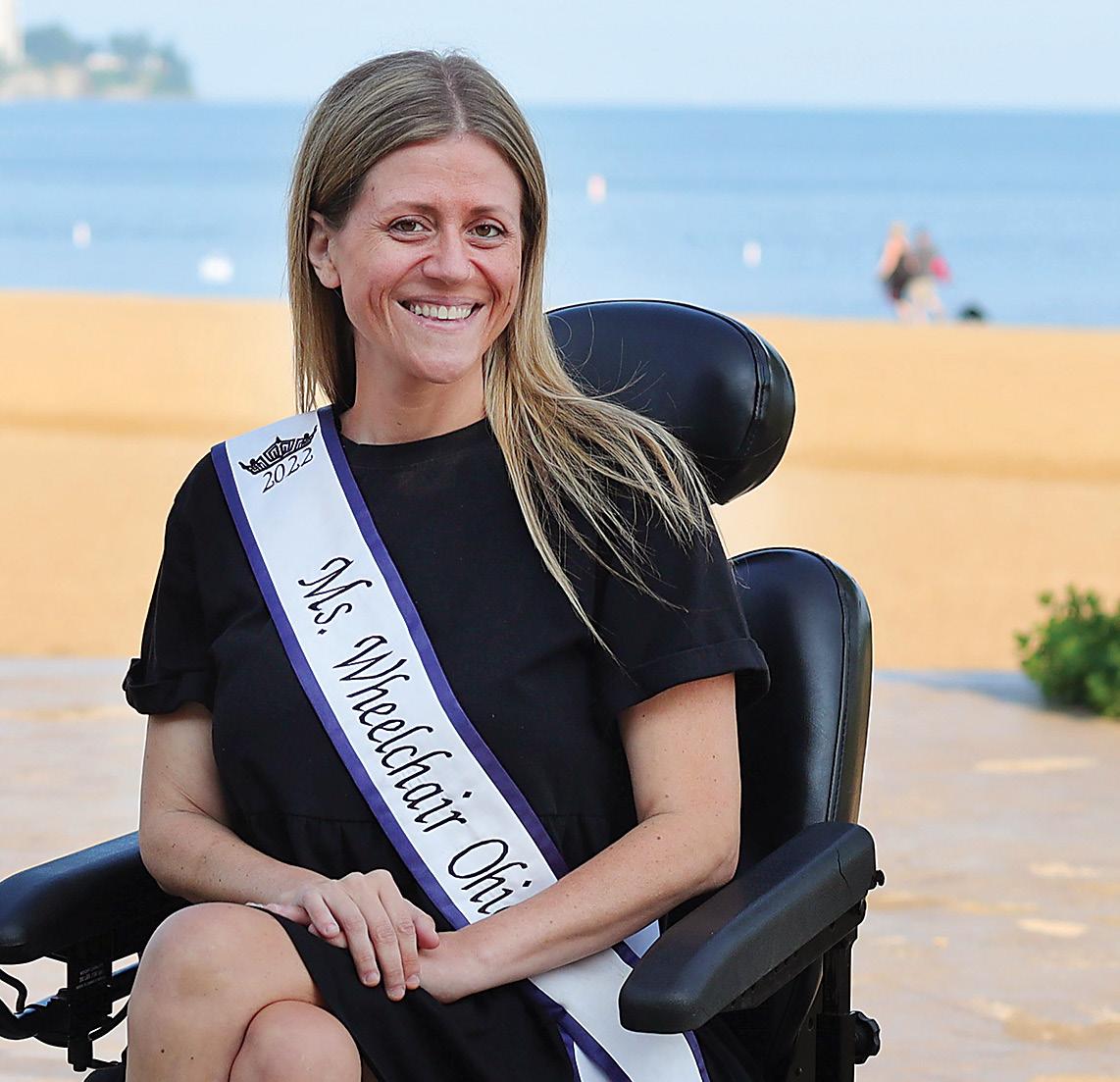
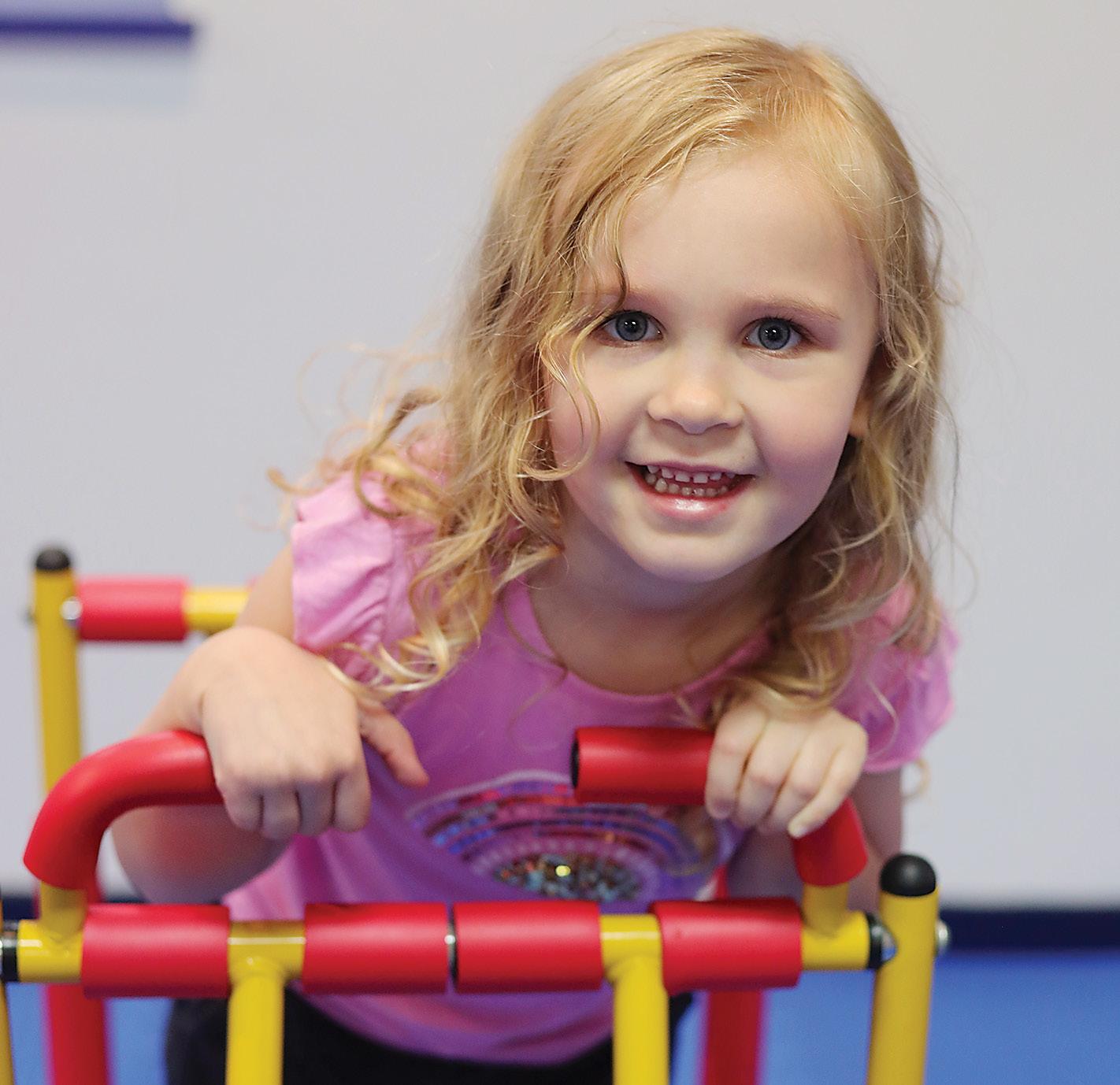
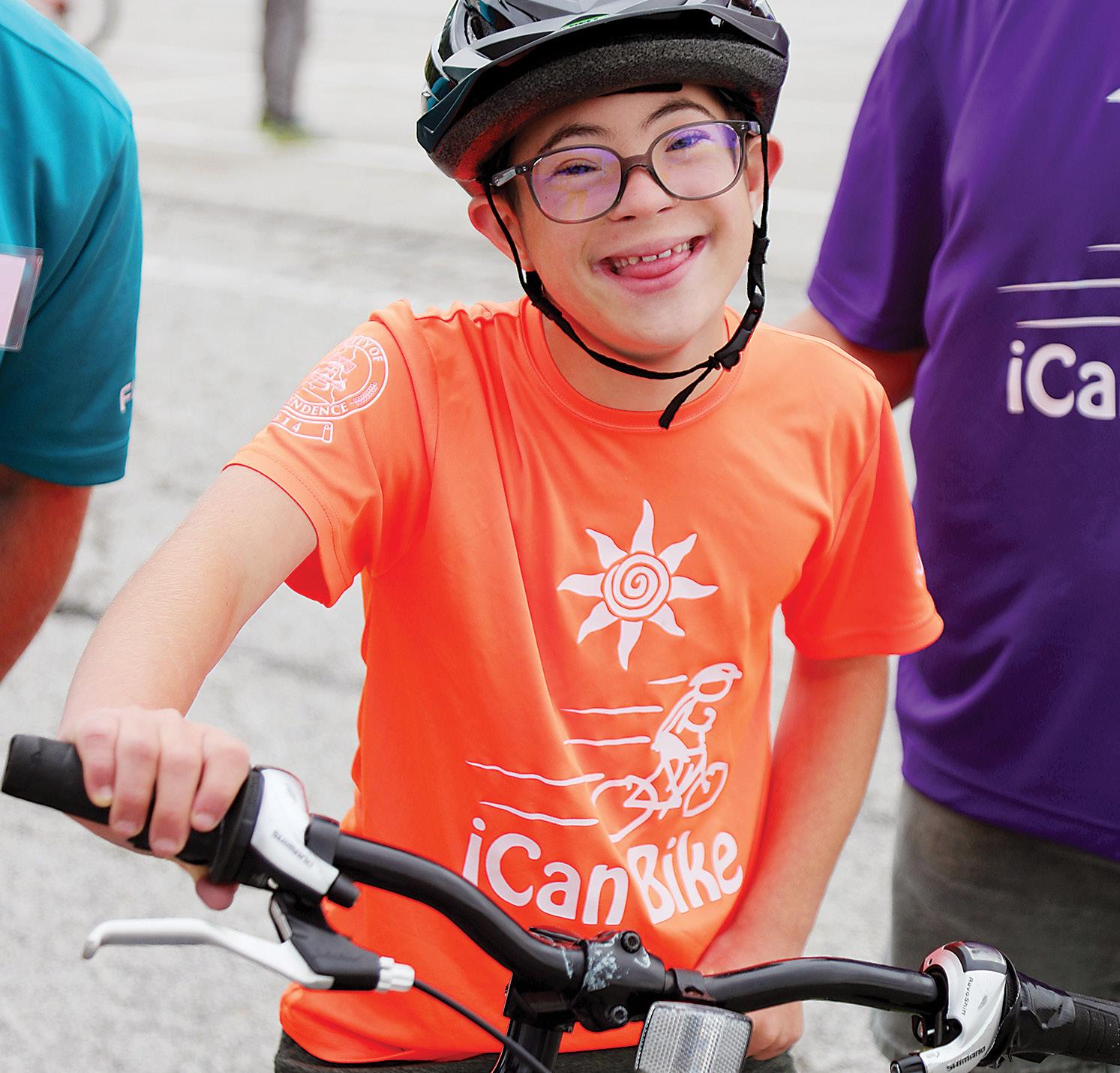
FREE 2023-24 Northeast Ohio Edition BROUGHT TO YOU BY A Magazine for the Special Needs Community Wellness Roadmap Health Check Travel with Kids Road Trip Fun Respite Care What to Know Living your Best Life
LIVESPECIAL HELPS US TO LIVE OUR BEST LIFE
Free online resource

Comprehensive database of providers for your every need
It’s a go-to guide for individuals with special needs, caretakers and providers in Northeast Ohio
Inclusive community engagement
Free educational programs
We Are Committed to Being Northeast Ohio’s Go-To Online Resource to Support Individuals With Special Needs and Their Families.

Email info@LiveSpecial.com to receive firsthand information and updates or to receive additional magazines. Scan or visit livespecial.com
LiveSpecial.com is a project of NCJW/CLE
26055 Emery Road
Warrensville Heights, OH 44128
livespecial.com ncjwcleveland.org
PRESIDENTS
Laura Kuntz & Dana Trau president@ncjwcleveland.org
EXECUTIVE DIRECTOR
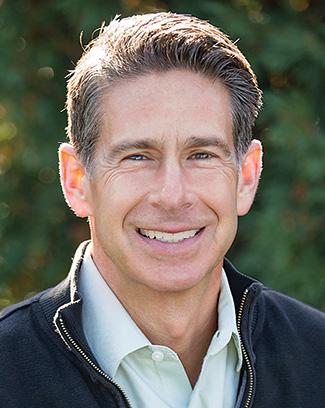
Mindi Axner 216-378-2204 ext. 103 maxner@ncjwcleveland.org
LIVESPECIAL COORDINATOR
Wendy Spitz 216-378-2204 wendy@livespecial.com
LIVESPECIAL ADVISORS
Jennifer Boroff
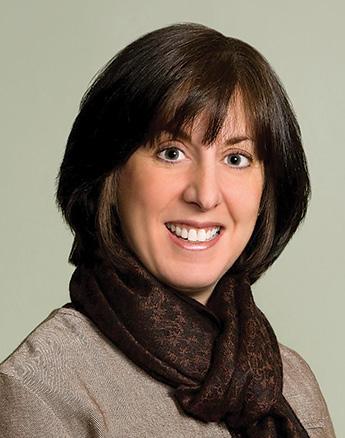
Elaine Eisner
Cindy Glazer
Laura Kuntz
Executive Director's Note
We are all looking for ways to live our best life. But how do you do that? For so many of us — especially in this post-pandemic time — it means getting out into the world, trying new things, growing.
And luckily, there are more doors open today than ever before for those with special needs to experience things like the joy of jumping on a large trampoline at a bounce park or traveling cross-country comfortably on an airplane. Many adventure parks, for instance, have special sensory hours that provide a quieter, more toned down experience, without the loud music or flashing lights. And all airports now have a special line that families with special needs can use to avoid a longer wait and reduce the risk of a challenging experience. Many airports go even further, offering passengers with hidden disabilities such as autism, PTSD, or hearing loss with a sunflower lanyard, which subtly lets airport staff and airline workers know that the person wearing it might need some extra time or assistance. At the National Council of Jewish Women/Cleveland (NCJW/CLE), we, too, know that living your best life means having a meaningful job, where you feel like you’re contributing to the world. We’re so proud to say that one quarter of our office staff comprises young adults with disabilities. Their skills — and amazing attention to detail — have helped us grow as an organization.
The opportunities for everyone to live their best life are vast. You just need to know where to look for them. LiveSpecial.com provides individuals with disabilities and their caretakers with the resources they need to better their quality of life. In the magazine — and on the website — you can find where accessible playgrounds are located, what apartments provide full accessible units for adults with mobility disabilities, employment services that can help people with disabilities find jobs, and much more. Take a look — and then let us know what you’re doing each day to live your own best life!
PUBLISHER
Brad Mitchell

EDITOR
Angela Gartner
MANAGING EDITORS
Denise Koeth and Shana O'Malley-Smith
ART DIRECTOR
Laura Chadwick
CONTRIBUTORS
Lindsey Geiss, Cindy Glazer, Faith Boone, Kathleen Fedico Mural, Jeannie Fleming-Gifford and Erin Sernoffsky
LiveSpecial.com Resource Guide is published by Northeast Ohio Parent Magazine and Mitchell Media LLC PO Box 1088

Hudson, OH 44236
330-822-4011
Copyright 2023 by NCJW/CLE and Northeast Ohio Parent

You hold in your hands the ninth edition of the magazine LiveSpecial.com. This year’s theme, “Living Your Best Life” exemplifies the motivation to thrive in all of life’s best and challenging moments. We thank you in advance for picking up this copy and hope that it encourages and empowers you in your journey.
We want to say a special “thank you” to the advertisers who’ve continued to support this project and share their expert knowledge with readers throughout the years, as well as those new advertisers that have jumped in this issue and added themselves to the conversation of resources for this community. We value the support more than we can say.
This publication will reach tens of thousands of people over the next year through free distribution at more than 500 locations and over 50 events. If you have suggestions for us for future content or strategic locations where you feel this magazine should be distributed, please feel free to contact me.
When we plan and strategize, edit and design and do all the things needed to create this annual publication, we always take time to remind ourselves of you — the local community of individuals with special needs and their families — including the amazing professionals who dedicate their lives to this cause. You are the reason why this publication happens and we do this for you.
Live your best life today,
PROJECT OF
A
Publisher's Note
With gratitude,
Mindi Axner Executive Director, NCJW/CLE
livespecial.com 2023-24 3
LIFE AT WORK
PAGE
ON THE COVER: LIVING YOUR BEST LIFE — Photography by Kim Stahnke
26
ADVOCATING
ALL
LIVING YOUR BEST LIFE
We feature four inspiring stories of people in the community living life to the fullest.
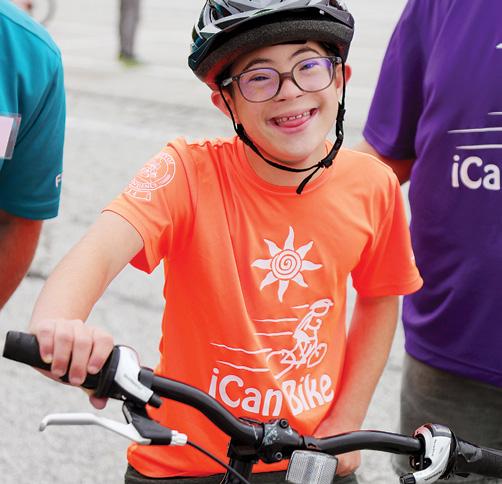
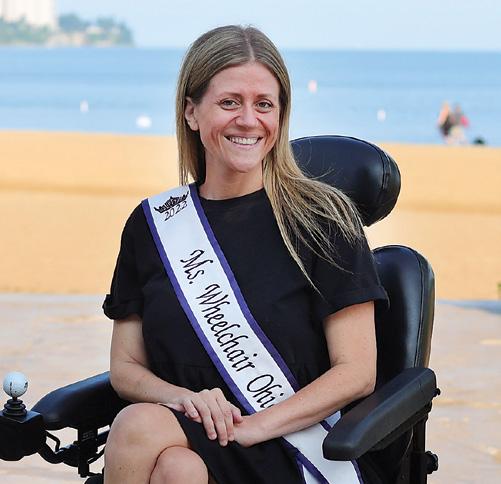
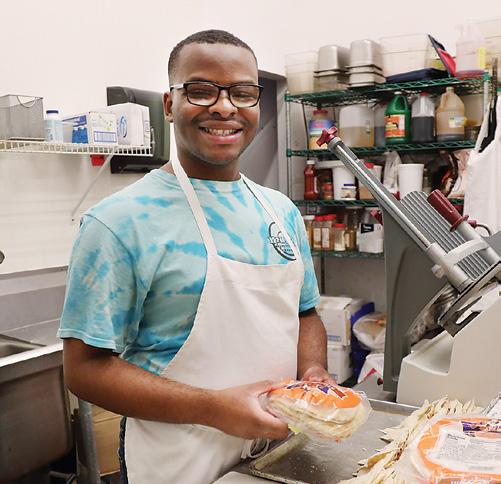
FEATURES
36 UNDERSTAND AND FIND RESPITE CARE
What caregivers need to know about respite and future care.
44
PLAN A SENSORYINCLUSIVE PARTY
Plan a party for adults and children with hands-on enjoyment.
46
A ROADMAP TO WELLNESS
DEPARTMENTS
EXECUTIVE DIRECTOR AND PUBLISHER LETTER
03 Living Your Best Life.
WORTH NOTING
06 The podcast list, adapting toys for accessibility, talking abelism, bookshelf and more.
EDUCATION
10 Promoting inclusion and social skills for early learners.
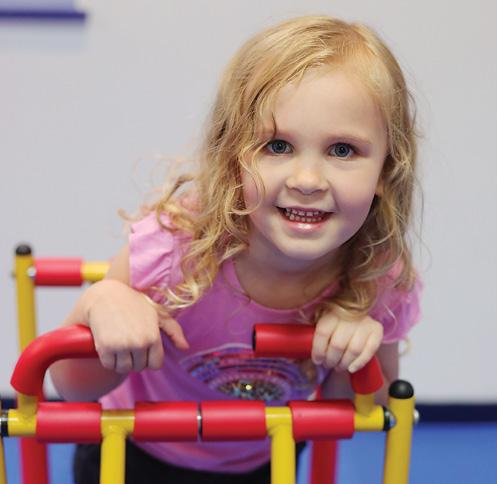
ADVOCACY
40 Finding support through local services and programs.
FAMILY MATTERS
17 Helping kids live life beyond therapy.
41 4 ways to avoid parenting burnout.
THERAPIES
11 3 takeaways for improved well-being from therapeutic marital arts.
Find
Helping
Think about your mental and physical heath pathways.
50
SINGLE DAD'S JOURNEY
Rob Gorski, The Autism Dad, shares how he embraces the unexpected.
48 DIRECTORY OF RESOURCES
Find these advertiser listings of resources, support and more!
13 Speech therapy for kids who don't use words.
14 Autistic therapist pushes for better family support.
16 Differences between music and art therapies program and adapted lessons.
HEALTH
18 How to keep kids to stay safe around water.
PLANNING
12 How local boards of DD support children and young adults ages 3-22.
42 Is intentional communities a housing option?
43 Ready to graduate checklist.
4 livespecial.com 2023-24 2023-2024 Edition
OUT
19 MAKING THE MOST
OF TRAVEL
this cross-country trip and tips on taking a planned out-of-town adventure.
TO PROMOTE INDEPENDENCE
of apps to help people and families with daily life. 30
PLAYGROUNDS
Learn about
22 APPS
List
INCLUSIVE
places for kids with all abilities to play together around the region.
WITH BIG MOVES
34 DEALING
families with big life transitions.
Brandon Johnson, 22, shows us his accomplishments at the job.
LEARNING NEW SKILLS Mattea loves to play. Her mom helps her reach new heights.
FOR
Krista Allison, former Ms. Wheelchair of Ohio 2022.
BREAKING BARRIERS
Kids at iCan Bike Camp achieves road readiness on their bikes.
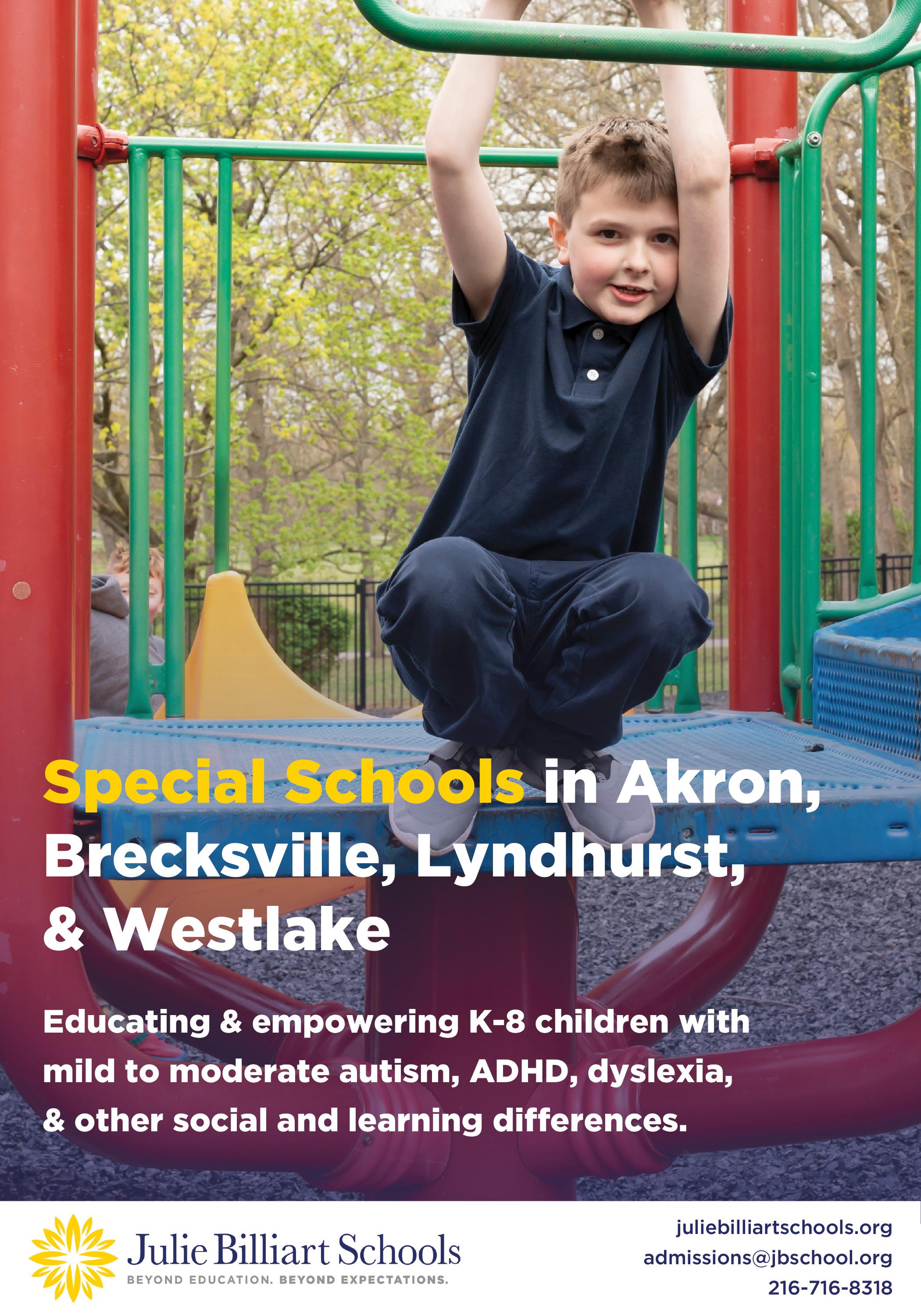
The Autism Outreach Podcast
Rose Griffin, speech therapist from ABA Speech, provides her ready-to-use autism interventions and speech therapy techniques to inspire professionals and parents working with students with autism. With 20 years of experience in the field, Griffin addresses a variety of topics on autism spectrum disorder, how autism symptoms present in babies and toddlers, recognizing the differences between autism and a speech delay, early intervention therapies, autism evaluation, autism diagnosis, how to help a child with autism start communicating if they are nonverbal, and more. abaspeech.org
The Podcast List
Many of these can be found on Apple, Spotify or other streaming choices. Some offer text transcripts and video options. Visit each website to find out how to listen.
by Angela Gartner
Empowered by Hope Podcast
Disability Visibility
This is life from a disabled lens. Disability Visibility is a podcast hosted by Alice Wong from San Francisco and features conversations on politics, culture and media with people who have disabilities. If you’re interested in disability rights, social justice and intersectionality, this show might be for you. The podcast is a production of the Disability Visibility Project, an online community dedicated to recording, amplifying, and sharing disability media and culture.
Text transcripts and links for each episode are available at: disabilityvisibilityproject. com/podcast. Twitter: @DisVisibility
Raising a child with medical complexities is often lonely, scary and overwhelming. Join Emily K. Whiting and Ashlyn Thompson, two parents of children with rare medical complexities, to get help and grow with them into empowered advocates for kids. Find a community of support, encouragement, education and resources, equipping you to navigate your child’s medical complexities with hope. To get more personal support, connect with them directly at charlotteshopefoundation.org.
The Friends for Life Podcast
This podcast dives deep into the topic of developmental disabilities and also discusses topics such as hard work, motivation and entrepreneurship for those who are disabled.
friendsforliferc.com/podcast

Worth Noting
6 livespecial.com 2023-24
For people with disabilities and their families, here are some podcasts to try, both from Ohio and outside the state. Whether you are looking for resources, advice, advocacy or a voice like your own, these episodes provide options for you.
Junkyard Mayhem with Squirmy and Grubs
Shane and Hannah are on a mission to change the way society understands disability and relationships. Shane is disabled and uses a wheelchair; Hannah is non-disabled and performs all of Shane’s daily care. On their popular YouTube channel with over 1 million subscribers, the married couple shares a raw and unfiltered look into their interabled love. squirmyandgrubs.com/junkyardmayhem
OOD Works
Opportunities for Ohioans with Disabilities (OOD) is a state agency that empowers people with disabilities through employment, disability determinations and independence. Join Kim Jump as she interviews unique individuals who discovered OOD Works. ood.ohio.gov or visit podcasts.apple.com/ us/podcast/ood-works
Ohio DD Talks
Ohio DD Talks is a podcast series featuring stories and conversations with Ohioans with developmental disabilities about current issues that are important to them. Advocates Nathan Turner and Marci Straughter are the hosts. All episodes are found on their YouTube channel and several audio streaming services. ddc.ohio.gov/media-and-news/ ohio-dd-talks-podcast
OCALI’s Inspiring Change

Hear stories and connections from Ohio Center for Autism and Low Incidence’s (OCALI) ongoing work of inspiring change and promoting access for people with disabilities. ocali.org/project/inspiringchange-podcast
TALK Down Syndrome
This podcast was created to show the world how Down syndrome is truly amazing. With the goal of inspiring and supporting life stories, each episode is a unique interview that provides real life experiences about our loved ones, shared by you. The podcast is there to TALK (Teach, Advocate, Listen, and Kindness). instagram.com/ talkdownsyndromepodcast
The Autism Dad
This podcast is from Rob Gorski, known as The Autism Dad. If you’re a parent or caregiver raising a child with autism, a child with ADHD, or a child with a disability, this podcast is for you. He highlights parent and autistic voices on this show because there’s so much to learn from each other. He talks about topics that apply to your life with the help of experts, parents, and autistic voices. New episodes released every Monday. theautismdad.com
Adapting Toys So Everyone Can Play
by Angela Gartner
At a recent workshop, National Council of Jewish Women/Cleveland (NCJW/CLE) members worked at soldering after disassembling battery-operated toys in order to attach a switch so it can be more accessible to people with special needs.

They were under the supervision of RePlay for Kids, a nonprofit organization that has been repairing and adapting toys that serve children with disabilities in the community.
Natalie Wardega, director of operations at RePlay for Kids, said they have held about 130 workshops like the one NCJW/CLE members attended. They have different options, including for organizations that want to host workshops, to families who want to learn how to adapt toys, to schools that are interested in getting students involved.
Wardega says they even have workshops for adapted power wheel cars for kids with disabilities, replacing a foot pedal for a more accessible option. In addition to adapting toys, as part of its volunteer work, RePlay for Kids also repairs toys for agencies.
“We work with county boards, hospitals, school districts, teachers and families,” she says. “When we host these workshops, the volunteers do not have to have any technical background. We train them, teach them how to open up a toy (and share steps on how to place the switches). We have a video and hands-on training to show them how to do it.”
She says the toys are put through a quality test before being handed out to families and other agencies.
“Over the years we’ve grown, and now we give away about 2,000 adapted toys and switches each year,” she says.
RePlay for Kids receives all different types of battery-powered toys, from new to gently used. She adds it’s not just for little kids, they serve from ages birth to 26.
“For these children who receive the toys, it’s the first step for them to learn the cause-and-effect relationship,” Wardega says. “A lot of kids had someone do something for them. They are learning to intentionally do things for themselves. That’s the motivation, and these toys are there to motivate them to do that.”
If you would like to host or attend an upcoming workshop, find an adapted lending library, donate toys to a drive or host a drive, visit replayforkids.org. Also, view their calendar for the latest workshop events and more.
livespecial.com 2023-24 7
PHOTO SUBMITTED BY NCJW/CLE
NCJW/CLE adapts toys at Replay for Kids workshop
Rabbi Tuchman Talks Ableism
By Cindy Glazer
Rabbi Lauren Tuchman, spiritual leader and educator, presented a Zoom session for NCJW/CLE. Rabbi Tuchman is, as far as she is aware, the first blind woman in the world to enter the rabbinate. She provides consulting to individuals and organizations across the Jewish community on a variety of matters pertinent to disability access, inclusion and ableism.

At its heart, ableism is rooted in the assumption that disabled people require “fixing” and
defines people by their disability.
“Somehow, people think that people with disabilities are something new — but people with disabilities have existed as long as human beings have existed, and they always will,” Tuchman says.
Tuchman offered a new paradigm for understanding that it is important to include all individuals within our sacred spaces. She spoke of her feelings of being an outsider and wanting desperately to be part of her religious community, like others who feel this way for
many reasons.
“Representation is important,” she says. “Though we are each the experts on our own disability experiences alone and must never claim to speak for or on behalf of others, having folks with disabilities in leadership positions sends a message that people with disabilities are wanted as part of the fabric that binds communities together, instead of being seen as a burdensome afterthought.”
For more information, visit rabbituchman.com
8 livespecial.com 2023-24 8 Worth Noting
The spiritual leader, who is blind, offers insight on community awareness for people with disabilities
PHOTO BY STEPHANIE
SISLE, STEPHANIESISLE.COM
OHIO TIES
Local Family Creates H-Bomb Ties to Help People with Special Needs

A neckwear company that specializes in fun bow ties and neckties for children and adults. It was inspired by Harrison Chmura (aka The H-Bomb), who has Down syndrome and autism, has always had an affinity for bow ties, and wears them often for all sorts of occasions. Harrison’s parents created H-Bomb Ties to provide work training opportunities for Harrison, or other differently-abled individuals like him. hbombties.com
BOOKSHELF
Same, But Different
By Holly Robinson Peete, RJ Peete and Ryan Elizabeth Peete
Actress and activist Holly Robinson Peete pairs with her twins in this narrative about the challenges and triumphs of being a teen who has autism and the effects on family, school, friends and life.
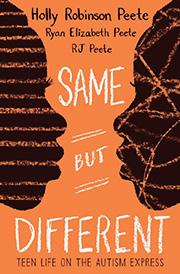

True Biz
By Sara Novic
The students at the River Valley School for the Deaf just want to hook up, pass their history finals, and have politicians, doctors and their parents stop telling them what to do with their bodies. This is a story of sign language and lip-reading, disability and civil rights, isolation and injustice, first love and loss, and, above all, great persistence, daring and joy.
See ME: The Invisible Autistic Boy
 By David Petrovic, author
By David Petrovic, author
and illustrator, and Sandy
Petrovic
This book tells a memorable story of a boy who felt invisible until a special peer “saw” him. Sandy and David Petrovic, a mother and son team from Northeast Ohio, have written together and attend speaking engagements to help other families who have children with autism. Kids learn about autism and do puzzles and activities that reinforce the book’s vocabulary and concepts. Underlying messages include the worth of every person, the power of kindness, and acceptance of differences in others and ourselves. petro-autism.com
Best Boy
By Eli Gottlieb
Sent to a “therapeutic community” for autism at age 11, Todd Aaron, now in his 50s, is the “Old Fox” of Payton LivingCenter. Todd attempts an escape to return “home” to his younger brother and to a childhood that now inhabits only his dreams. The book is written in the first-person voice of an autistic, adult man.
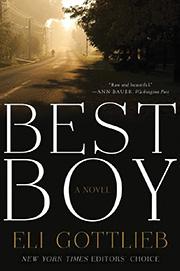
AutoBrush
Making a Difference
FEATURED GADGET

An automatic, u-shaped toothbrush that has 58,000 tapered nylon bristles to clean all surface areas of teeth at once. For kids and adults, with fun animal shapes for kids. Prices vary. tryautobrush.com

— cuyahogabdd.org
Lois Davis, of Beachwood, wants to make sure her husband, Larry, is remembered.
Larry Davis, who passed away at 75 years old, was the inspiration for The Lois J. and Larry Davis Family Endowment Fund, which provides support for a variety of projects throughout the Northeast Ohio community.
“I couldn’t do it without Larry,” Davis says about the endowment fund. “Larry deserves to be remembered and I want to honor his memory. People recognize the name; if you don’t use the name, no one will follow you (in donating to others).”
Davis says her son, Jeffrey, was the first one to point out that she could make a difference in the community.
Davis went on to choose projects and organizations to donate in her family’s name.
Davis has donated to the Ronald McDonald House Cleveland as an annual room sponsor, providing funding for guest rooms where families can stay at no cost while their child is receiving medical treatment at Cleveland area hospitals.
She also has supported the Jewish Family Service Association of Cleveland’s The Hebrew Shelter Home, a place for women and children escaping domestic violence or homelessness.
“(Opportunities to give) just come up and I can make a difference in a person’s life,” Davis says, which is why she wanted to continue to support LiveSpecial.com. “There are so many people that could benefit from this magazine and the website, I wanted to support this project in some way. I know how valuable LiveSpecial.com is for our community.”
Larry and Lois Davis
Photo courtesy of Lois Davis
Lois Davis helps those in need in memory of her husband, Larry.
livespecial.com 2023-24 9
Education
IMPORTANCE OF ACCESS TO EARLY LEARNING
How young children with disabilities develop skills and promote inclusion with early childhood education
The first few years of a child’s life are crucial as they set the stage for future academic and personal success. During the first five years of a child’s life, their brain develops rapidly, allowing them to retain up to 80% of their lifetime knowledge.
Access to high-quality early childhood education has many benefits for young children, including aiding the development of social, emotional and cognitive skills. Such benefits are no different for children with special needs.
INCLUSION BENEFITS ALL CHILDREN
By being included and empowered in the classroom, children with disabilities have the opportunity to learn and grow alongside their peers, which reduces the stigma often associated with disabilities.
“Inclusion is important to all children regardless of their ability, because it fosters a culture of empathy and understanding among all students,” says Sharon Thompson, Step Forward’s early childhood inclusion coordinator. “It encourages mutual respect and appreciation for differences.”
Data shows inclusive services improve social development in children, as well. “Children with disabilities can benefit from socializing with their peers and developing better social skills,” says Renata Turner, a Step Forward early childhood inclusion coordinator. “This helps them establish stronger relationships and have a greater sense of belonging. Children with disabilities who are included in the classroom have a greater sense of belonging, which can lead to increased self-esteem."
EARLY IDENTIFICATION
According to Step Forward’s inclusion staff, it ensures each student with a
disability can fully participate in the least restrictive environment.
Once a child is identified as having a disability, the inclusion coordinators connect children and their families to a range of specialized services to support their development. These services may include accommodations like mobility devices, assistive technology, or individualized resources like counseling, speech and language therapy, occupational therapy and physical therapy.

For example, Head Start is an early education program that promotes school readiness in children from birth to age 5. It's free to income-eligible families and focuses holistically on children to integrate nutrition and health and dental screenings into their preschool experience.

“Early identification is paramount,” Turner says. “Early identification changes a developmental path and improves outcomes for children with disabilities.”
For more information on Step Forward’s Head Start, visit stepforwardtoday.org
10
PHOTO COURTESY OF STEP FORWARD
Therapies
3 THERAPEUTIC MARTIAL ARTS TAKEAWAYS FOR IMPROVED WELL-BEING


Martial arts has a lot to teach about well-being, especially a hybrid style like Summit Academy Schools’ Therapeutic Martial Arts. With a focus on serving K-12 students with autism and ADHD, Summit Academy Schools incorporate therapeutic martial arts into their curriculum. In the dojo, where students learn martial arts movements and traditions, they also find focus, structure and self-confidence. For improved well-being, Shihan Chuck Rickard, who heads Summit Academy’s Therapeutic Martial Arts, shares three takeaways from the program that you can incorporate into your daily routine.
1. FOCUS — Mindfulness represents a key component of therapeutic martial arts. Students practice thoughtful, deep breathing, helping them find focus and stress relief. They then advance to a combination of breathing and movements, coordinating intentional inhaling and exhaling with motions and stances. From a martial arts standpoint, breathing centers attention and power on movements and tempers anxiety.
TAKEAWAY: Just breathe.
2. ORGANIZATION — Structure runs deep in the therapeutic martial arts classes. For instance, students bow when they enter the dojo. They arrive prepared to practice movements and do so within a designated space. Students learn organizational skills through therapeutic martial arts. Structure helps them complete tasks by building routine into their schedules. Students can carry these strategies into their classrooms and home lives.
TAKEAWAY: Structure will not only help you develop organizational skills, but create a sense of calm in the process. Through structure, you can complete tasks in manageable segments without feeling overwhelmed.
3. SELF-CONFIDENCE — Therapeutic martial arts creates a noncompetitive setting, one in which students are not compared with each other. Instead, students compete with themselves, striving to improve from the day prior. “This really helps with self-esteem and confidence,” says Shihan Rickard. He adds that therapeutic martial arts encourages students to strive to meet their own goals, rather than those society sets for them. The result is a validated feeling of accomplishment.
TAKEAWAY: When you set a personal goal and achieve it, you’ll give your self-confidence a boost. Summit Academy Schools, located throughout Ohio, are tuition-free, public community schools that serve students in grades K-12 who learn differently, such as those with ADHD and Autism. Summit Academy Schools design, develop and deliver educational opportunities in a therapeutic environment so everyone can learn. For information, visit summitacademies.org

livespecial.com 2023-24 11
Student Raymond shows his skills at Summit Academy therapeutic martial arts.
PHOTOS COURTESY OF SUMMIT ACADEMY SCHOOLS
Shihan Chuck Rickard conducts a demonstration.
Summit Academy therapeutic martial arts instructor Sensei Johanna Norris.
HOW LOCAL BOARDS OF
DD SUPPORT CHILDREN AND YOUNG ADULTS AGES 3-22
Ohio law states that once a child turns age 3, the school district of residency becomes responsible for the education of your child. When you have a child with special needs, this includes assessments, the evaluation team report (ETR), and writing and carrying out the individualized education plan (IEP).

However, sometimes a child and family may need more help beyond what is the school district’s responsibility. There are several agencies and community resources that can work alongside your school district to help you meet your child’s needs and help your family understand your child’s disability.
WHERE TO BEGIN: BEYOND THE SCHOOLHOUSE DOOR
Call your local county board of developmental disabilities to begin determination of eligible services. It is never too early to call for information.
MONITORING AND LINKING FAMILIES TO COMMUNITY SERVICES AND SUPPORTS
Once determined eligible for services, your local county board can:
• Collaborate with school and attend IEP and ETR meetings as you request. The school may not automatically invite your county board representatives to meetings, so you must request that an invitation be sent.
• Refer and connect you to mental health and behavioral resources.
• Help with process of obtaining benefits.
• Refer to assess risk and needs as it relates to waiver requests.
Ages 3-13: Supporting Children

Through the Early Years
• Bridge the process from early intervention (age 3) until transitional youth (age 14).
• Be a resource for local schools.
• Provide information regarding funding sources with the county board and other local agencies.
• Monitor services provided and services needed.
Ages 14 until High School Graduation: Bridge the Transition from School to Adulthood
• Attend IEP and ETR meetings.
• Help you build a team to assist you in meeting your goals.
• Help you evaluate your strengths and weaknesses in transition areas.
• Help you to understand post secondary services.
• Facilitate discussion about college, training, employment and community living.
• Be available to act as a resource and partner.
• Help families to prepare for life after graduation by focusing on employment, benefits, and guardianship as needed. For an interactive list of best practices during all life stages, check out the Stark DD Navigation Tool at starkddnav.org.
12 livespecial.com 2023-24
Planning
SPEECH THERAPY FOR KIDS WHO DON’T USE WORDS
By Rebecca Mental, Ph.D., MPH, CCC-SLP
If your child doesn’t say any words, and you have elected to have them evaluated for speech therapy, you may be concerned that he or she will not be able to participate fully in their speech therapy sessions. This is not the case at all. A speech-language pathologist (SLP) is specially trained to work with children at all levels of
communication ability, including those who don’t use spoken words.
An SLP will encourage your child to use spoken words through play-based therapy. They will engage with your child using a variety of toys, games and other activities while modeling words. They may also work with your child on following simple directions such as “put

in” to put a chicken in its nest. Through this modeling, your child will be encouraged to use their spoken words.
Sometimes, children need other ways to communicate besides spoken language. The SLP may introduce an augmentative or alternative communication approach. This is a long name that simply means communicating in some way other than using words. The child can learn to use gestures or sign language, picture boards, a talking iPad, or other augmentative or alternative communication. Using this approach does not mean a child will never use their words, and also does not slow down their progress toward using words. In fact, it can make their progress faster.
An SLP’s main goal is to help your child communicate effectively. Through a combination of modeling speech and providing alternative means of communication, they will make sure your child learns how to best get their message across. The SLP will actively involve the parent in all therapy sessions, so that you can learn how to do the same things with your child throughout the week.

livespecial.com 2023-24 13
Therapies
AUTISTIC THERAPIST PUSHES FOR BETTER FAMILY SUPPORT
In the spring of 2023, the CDC announced that the autism prevalence rate jumped to one in 36. This increase can be partially attributed to the large number of adults seeking and receiving an autism diagnosis.
Supporting this fast-growing population can provide both significant challenges and great rewards. Some find working with an autistic therapist can make a difference.
Amelia Slama, a Northeast Ohio-based licensed professional clinical counselor, also happens to have autism.
“I do notice a lot of clients seem to seek me out for that reason, especially people who are diagnosed late or think they may be autistic,” Slama says.

Like many of her clients, she received her own diagnosis as an adult, at the age of 29, after she moved in with her husband.
“I had quirks and differences my whole life, but he began to see how these things really affected me,” Slama says.”It was a very weird experience because I am a therapist and I have a lot of experience with assessments and understanding development in children and adults. I thought, ‘How did I not know this my entire life?’”
That unknown would play a role in shaping Slama’s own practice, though she says it took some adjusting.
“In our field, sharing lived experience is a very new thing,” she says. “This is not something I was taught is appropriate in school. But [my clients] feel more comfortable knowing the person understands their experiences, they can relate to them, and that seems to help clients to be more open about what they’re going through.”
What she didn’t anticipate was the way her own vulnerability would change everything.
“It’s been more rewarding,” she explains. “Once I started to bring my lived experience into it, the work changed significantly. I started to notice a lot of positive things that my clients were experiencing very quickly, whereas before change would take a very long time.”
Slama attributes these changes to neurodiversity affirming practices.
“It basically means that all people have differences in how their brain works and functions, and how they interact with the world. Instead of shaming or pathologizing those differences, we honor them and understand how that impacts the person, and what strengths and differences they experience from that.”
Slama says her field is now in a period of growth when it comes to recognizing and honoring neurodiversity — an umbrella term that refers to anyone who experiences differences covered in the the Diagnostic and Statistical Manual of Mental Disorders, including autism, ADHD, OCD, and mental illnesses.
She says the timing couldn’t be more important.
“We’re starting to see that, unfortunately, a lot of autistic people have trauma because of how society views us differently,” she says. “The biggest thing that I see is clients who don’t trust themselves, and have a hard time advocating for themselves or knowing how they can support themselves.”
That’s something Slama wants neurotypical therapists to understand, so that they can better support their own clients. Her biggest advice: remain open-minded.
“When you’re working with autistic people, do not make assumptions,” she says. “As therapists, we have all this professional knowledge, and we think we know how people might be experiencing something or what they need, but I think you have to be really careful with autistic people and following their lead.”
Slama now serves clients throughout Ohio and Kentucky through her telehealth practice. She often refers clients to Milestones Autism Resources for its online Resource Center, Milestones Autism Planning (MAP) Tool, and national conference. She also started an autistic provider directory in 2021 to help meet the growing need.
What started with five autistic therapists has now grown to hundreds across the United States, and seven internationally. She continues to get dozens of emails from providers every week.
“There’s a lot of people in our field who realize they’re neurodivergent, and understand how important it is to be open about it,” she says. “People want someone who can understand their experience, who won’t shame them for those differences.”
The Milestones Autism Planning (MAP) Tool is your online guide for life. It is a one-stop, easy-to-navigate resource to help you plan and prioritize, and can be customized to any age, ability and interest. Check it out at milestones.org/map. To reach Amelia Slama, fill out an intake form through the Milestones free autism HelpDesk at milestones.org/helpdesk.
14 livespecial.com 2023-24 PHOTO COURTESY OF AMELIA SLAMA
Advocacy
Amelia Slama

DIFFERENCES BETWEEN MUSIC & ART THERAPY PROGRAMS AND ADAPTED LESSONS
 By Ann Marie Raddell, Director of Creative Arts Therapies at The Fine Arts Association
By Ann Marie Raddell, Director of Creative Arts Therapies at The Fine Arts Association
If you or someone you love are looking to experience music therapy, art therapy and adapted programming in dance, drama, music and visual arts in centers, you will likely have questions about which one best fits you and your family’s needs.
Any music and art experiences in these creative therapy departments at centers like The Fine Arts Association in Willoughby are facilitated by a therapist to meet the needs of individuals of all ages and abilities. However, for clients, parents and caregivers, the most common question regarding programming is about the difference between going into a therapy program vs. an adapted lesson. Here is what you need to know about both to help with the decisionmaking process.

THERAPY PROGRAMS
Music and art therapy services use music and art experiences to achieve non-music and visual arts related goals, such as attention to task, motor development, appropriate social interaction, language development, communication, positive self-worth and emotional expression, among others. The focus of the sessions is not the art and/or music-making, but the effects of being immersed in art and music-making.
ADAPTED PROGRAMS
For adapted programming, the primary goal is growing in the skill of the chosen arts experience. Adapted dance, drama, music and visual arts classes and lessons provide students with additional support, such as adapted equipment and/or teaching techniques to be successful within the learning environment.
The added bonus of adapted programming is that students still naturally gain improvements in those non-artistic goals just through participating in that specific arts experience.
For info, Ann Marie Raddell, director of Creative Arts Therapies, at The Fine Arts Association at araddell@ fineartsassociation.org or at 440-9517500 ext. 124.
16 livespecial.com 2023-24 PHOTO COURTESY OF THE FINE ARTS ASSOCIATION
Therapies
Family Matters
LIVING YOUR BEST LIFE
One that’s not full of therapy, but full of life experiences
By Rebecca Ravas, MS, PT, Clinical Therapy Manager, LeafBridge at UCP of Greater Cleveland

What does it mean to live your best life? For a child with disabilities, living your best life happens outside of the clinic.
The “F-words” of childhood disability include the following: fun, function, family, friends, fitness and future, according to the CanChild’s Foundation. Both Ani’s and Scarlett’s parents recognize that life experiences balance out the need for therapies and make sure the two girls participate in a variety of activities that include many of the “f-words' 'mentioned.
FUN — With her specialized adapted equipment, Ani and her family take trips to the zoo, aquarium and farm — all areas that may appear accessible. She is given the opportunity to be an active participant — standing in her stander — dressed up as a dinosaur for Halloween and playing mini-golf.


FAMILY, FUTURE & FUNCTION — Valerie Kessler SLP/CCP at UCP of Greater Cleveland developed “More to Say” education modules for parents — and one is focused on play. Family
members play together through adapted art, cooking, board games, dancing, music and more. This also provides a space for parents and grow their networks, ensuring lasting quality experiences as their child grows.
FRIENDS & FITNESS — Scarlett enjoys swimming with her friends in her pool at home, using her adapted float. Also, Scarlett’s mom started a Girl Scout troop specifically for children with special needs. This group has created social and educational opportunities for the Girl Scouts and a network for moms.
While the care team in the clinic prioritizes a child’s motor, play, communication, and activities for daily living skills, participating in meaningful experiences with family and friends outside of the clinic offers the best opportunities for these kids to live his/ her best life.
livespecial.com 2023-24 17
PHOTOS COURTESY OF UCP
Ani, left, Scarlett, right, engage in community activities with family and friends.
STAYING SAFE AROUND WATER
Swimming can provide recreational opportunities for individuals with Autism and other developmental disabilities year-round. Parents and caregivers, however, are sometimes fearful and anxious at the thought of being around water with their loved ones due to safety concerns.
According to the National Library of Medicine, drowning is the leading cause of death among individuals with Autism. One study noted a
reason for the high rate of drowning is that children with Autism often have a fascination with water and are specifically prone to “elopement,” or wandering. Trouble following directions, communication challenges, and limited awareness of safety and surroundings also can increase the risk. There are ways to reduce the risk of drowning. This might include installing child safety locks on doors that lead outside, pool alarms, fences around
yards and home pools, and using GPS monitoring devices for individuals prone to wandering.
Since drowning often is silent and can happen quickly, always supervise children around the water and identify who is responsible for watching each child. Prepare everything for bath time before putting a child in the tub, and remember to empty out buckets and small pools when they are not being used. It also is recommended that everyone learn CPR and first aid.

Another way to reduce the risk of drowning is through water safety lessons that focus on skills needed to get to safety should a person fall into any body of water. This includes learning to fall into deep water, returning to the surface after submersion, floating or treading water to get acclimated, turning around and moving through the water to safety, then exiting.
The Autism Society of Greater Akron initiated its Water Safety Program in 2017 in response to the drowning of a local child with Autism. To learn more about this program, visit autismakron.org/swim.

18 livespecial.com 2023-24 Health
Making the Most Out of a PLANNED TRIP
The author and her son, Johnny, who has Down syndrome, made a crosscountry trip. Here’s how traveling can be possible for everyone.
By Kathleen Ferdico Mural
“

Oh, say can you see…,” Johnny belted out our National Anthem at the base of Mount Rushmore. It was day 13, and the pinnacle of our 24-day, 4,800-mile, mother-son adventure. It began with an invitation to a family celebration and transformed into the trip of a lifetime.


I’m not one to miss significant family events if I can help it. With families spanning across multiple states, it isn’t always easy or feasible to make it work. The invitation to celebrate a nephew’s milestone in March was a tricky one. The dates didn’t correspond to spring break for the children. Weather isn’t always cooperative between Ohio and Nebraska at that time of year. If we were to go at all, my husband and I would have to divide and conquer.
Continued on page 20
livespecial.com 2023-24 19
COURTESY OF MURAL FAMILY
PHOTO
Kathleen and Johhny at Mount Rushmore
Continued from page 19
Johnny, a 14-year-old eighth grader and our youngest child, who has Down syndrome, is a lover of all things presidential, our nation and its history. He has a fascination with states and their capitals. As much as I knew it would be impossible to coordinate getting a family of five to Nebraska in March, I also knew it was a trip Johnny should take with me.
TIP

1

Follow the interests of your travelers.
I had long been thinking that the next time we traveled west, I wanted to make the nearly 600 mile “side trip” to see Mount Rushmore. As I formulated a plan for a weeklong vacation, I was conflicted, picking and choosing the sites Johnny would find most interesting. As I rejected options I knew he would like but we couldn’t reasonably visit in the time we had, my mind kept wandering, wondering, “How often will I drive this far west in the future?” As I hemmed and hawed, the thought mushroomed: “Let’s go big!”

The major hurdle in my wild idea: school. My email to the principal went something like, “Instead of a week off, would you be able to support a three-ish week road school experience?” I listed
the national parks, historic monuments and experiences like logging miles and map reading for hands-on learning. Within an hour, the reply came: “ABSOLUTELY!!” Four months later, Johnny jumped into the car with a resounding, “Let’s hit America!”


TIP 2

Find a travel app that works for your needs. The travel apps show you all kinds of things between points.
TIP 3
Don’t let pre-conceived barriers stop you from exploring opportunities. Duration, distance and destination don’t matter. It just so happened that our trip was a long one.
In the months between, I pulled together a rough itinerary using Johnny’s interests as a starting point. I looked up where all the presidents are buried. I listed places where we knew people. I googled “how to plan a long road trip.” I found an app that let me add and take away destinations with ease.
I heeded advice gleaned from my research and added a few things that made sense for us. I aimed to have our “butts in the seat of the car” no more than 5 hours a day. The five-hour tip was one I read about in my research about long drives. It proved to be right on. I never felt like I was driving the mileage we accrued. And most days, it was not five straight hours. I tried to identify someplace to stop with something to do or see that got us out of the car.
20 livespecial.com 2023-24
PHOTO COURTESY OF MURAL FAMILY
Johnny and mom Kathleen pack for their three-week long road trip.
They visit Lewis and Clark National Historic Trail headquarters in Omaha, Neb. ,
We brought a good cooler. I created what I called my travel kitchen — a tote with a small air fryer, hotpot and mess kit — so we could “eat in.” The car was equipped with first aid, flares, flashlights, sleeping bags, and hand warmers in the event of an emergency — which thankfully never arose. We arrived at our hotels no later than 4:30 or 5 each afternoon. Every few days, we stayed more than one night in a place to allow for some downtime. We had no prescription meds to worry about. I had a first aid kit with the basics. I brought a thermometer and COVID-19 test kits, etc. I made sure I had insurance cards, AAA and I enabled OnStar emergency services and Wi-Fi for my car — you can turn those on and off for a fee if your car is equipped.
More important than packing lists and gear was mindset. Every other vacation I’d been on, the destination was the prize. Getting there was the burden, something to endure. This was different. The journey itself was as important as where we were going. We stopped at interesting points along the way. If we heard about something we thought would be fun, we modified our plans. When we got too tired, we crossed things off the list. If weather impeded our progress, we stayed put until it was safe to travel. This was not about going someplace and seeing everything it had to offer. Our goal was to see a lot of places and pick the most meaningful experiences for us at a reasonable pace.
a picky eater with limited choices — a nugget and fries kind of guy. I didn’t want him or I to eat fast food the whole time. I packaged up the frozen nuggets and fries I use at home into single serving bags for the cooler and cooked them up in the air fryer in the hotel. I brought some dish towels, sponges and detergent for clean-up. It worked well. The hotpot could boil noodles for mac and cheese. I had brought canned soup and salad fixings for me, which also were replenished as needed. When we did eat out, restaurant portions allowed me to pack up leftovers for the cooler to reheat.
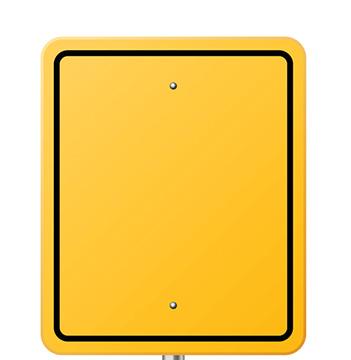

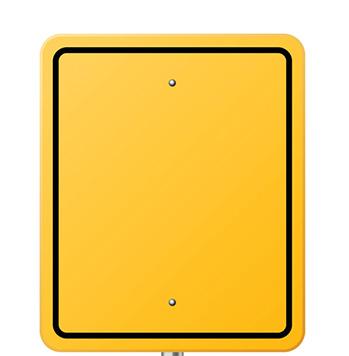
I didn’t tell Johnny about the trip until a few weeks before. I knew he would be excited and it would be distracting. I didn’t want him to “check out” at school too soon. He knew we were going to Nebraska for his cousin’s confirmation. Then it was just talking about what we would see, both people and places. He helped pack using lists I made.

Ultimately, we traveled through 13 states. We visited seven state capitals and eight presidential burial sites, birthplaces and homes. We spent time with 13 cousins, two aunts, one uncle and five friends. We shared 78 painted rocks, made by Johnny’s classmates, with people who showed us kindness along the way. Johnny stamped his National Park Service passport book in eight locations and earned junior ranger badges at each one. We saw bison, pronghorn sheep and prairie dogs in the Badlands, and a roadrunner in Petroglyph National Monument. We drove along the Lewis and Clark scenic byway and crossed through nine of the 14 states included in the Louisiana Purchase. We traveled through plains, mountains and deserts. We graffitied cars at Cadillac Ranch on Route 66 and stood where Missouri, Kansas and Oklahoma intersect. We bought souvenirs at the Corn Palace, ate ice cream at Wall Drug and rode the Sandia Peak Tram. And best of all, Johnny sang his heart out at the foot of Mount Rushmore while nearby a star spangled banner waved o’er the land.

livespecial.com 2023-24 21
PHOTO COURTESY OF MURAL FAMILY
5
an itinerary, but consider it an outline to be modified as
Johnny and his mom having fun visiting Cadillac Ranch in Amarillo, Texas where 10 Cadillacs buried nose-down at the site. TIP
Make
needed.
TIP 4
Be
prepared for emergencies.
goals for your travel, then build your plans around them.
Apps to Promote INDEPENDENCE
By Lindsey Geiss
Apps for mobile devices have the potential to help improve executive function and promote independence for individuals with disabilities from childhood through adulthood. These tools may boost self-direction, confidence, and other language and life skills. From regular reliance for daily communication or task management to occasional social-emotional or academic support, we compiled a list of apps identified by families and professionals alike to help you and members of your family lead more independent lives.
COMMUNICATION
These are some popular Augmentative and Alternative Communication (AAC) apps to help users with daily communication and building language skills through picture/symbol- and text/typingbased systems:


AssistiveWare offers an interactive guide to find which AAC app best fits your needs, in addition to accessible keyboard apps and bundles. Allows you to tap images or type words to speak. Customizable to support beginning and advanced communicators, and available in multiple languages, Proloquo2Go ($249.99 for iOS, $124.99 for Mac). Plan on a few hours for setup/ instruction videos.
Proloquo is more userfriendly and streamlined for children with good vision and fine motor skills. Designed to support language growth from first words to full literacy. (1 month free trial, $9.99/month or $99.99/year, iPhone and iPad; share app with user’s team at no extra cost.)
TouchChat HD is a fullfeatured communication solution offering easy navigation for child, family and care team. Head tracking capability is included (with latest iPad/iPhone models) for those with limited use of their hands. ($149.99, $299.99 with WordPower suite of vocabularies – the most popular version, TouchChat Discover free 30 day trial)
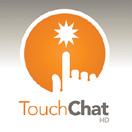
Goally AAC Talker is an easy-to-use symbol-based talker app included in Goally’s Therapy Suite Apps for kids, which also includes: Visual Schedules, Checklists, Reminders, Language Learning Games,

Finger-Dexterity Games, & more. Included are 100+ pre-built routine templates, 50+ video learning modules, free invites to your therapy and teacher team, and fun characters. App. (Apple/Android; App Suite $15/month + $149 for dedicated device free from Web browsers and social media). GetGoally.com offers a free printyour-own visual schedule builder.
Card Talk supports communication with 200 picture cards with voice sound or your own photos with voice recording for children who have difficulties in verbal communication. Free with in-app purchases; Apple/Android)

DICTATION
Dragon Anywhere dictation and text-to-speech app creates, edits, formats and shares documents of any length directly from your mobile device and can synchronize with the Dragon desktop software. (Free one-week trial converts to $14.99/month or $149.99/year subscription; Apple/Android)
Otter.ai records and transcribes conversations and virtual or in-person meetings with real time captions and meeting notes. (Free to download, Pro $16.99/month, $99.99/year; Apple/Android)
22 livespecial.com 2023-24
pConsider taking advantage of free trial periods. Pay close attention to cancellation terms and conditions — and set reminders for yourself to turn off auto-renew, usually at least 24 hours before the end of a subscription period, before incurring charges you do not want. Also watch for promotion codes or discounts during certain times of the year. *Pricing of subscriptions and apps are subject to change.
READING, WRITING AND MATH
Teach Your Monster to Read is an award-winning phonics and reading game helping children learn to read from preschool through first grade. Bundle with Adventurous Eating to assist with fussy eaters. ($5.99 for both; Apple/Android)

Sentence Builder from the Mobile Education Store helps elementary age children build grammatically correct sentences with pictures, three levels of play and encouragement animations and audio clips. Other apps from this developer include Story Builder, Sentence Builder Teen, and Conversation Builder Teen, a virtual conversation simulator. ($8.99; Apple iPad)
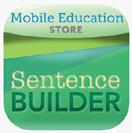
Adobe Fill & Sign lets you fill, sign and send any form fast. You can snap a picture of a paper form and fill it in on your phone or tablet, then e-sign and send without printing or faxing. (Free; iPhone or Android)
iWrite Words teaches handwriting by tracing words, letters and numbers in a fun, entertaining way. ($2.99; Apple)


Count Money! for iPad helps people of all ages count money in practice or quiz mode. (Free, Apple iPad)

Learning Ally Audiobooks offers access to humanread audiobooks, including bestsellers, classics and textbooks, with highlighted text synced with narration, speed control, bookmarking, highlighting and note-taking. Membership is restricted to those with a demonstrated learning disability, visual impairment or physical disability that makes it difficult to read using traditional print. Documentation from a qualified professional for each member is required. ($135/year membership; Apple/Android)


ModMath is recognized for making learning easier for people with dyslexia and dysgraphia, autism and other learning difficulties. The app features virtual graph paper and a pen to set up and solve problems without pencil and paper. Use touchscreen and keypad to set up and solve basic math problems or complex algebraic equations. (Free with in-app purchases; iPad/ Mac, coming for Android and Chromebook)

Photomath allows you to point an iPhone camera at a printed or written equation, and it will solve it with step-by-step explanations. It works with integers, fractions, decimals, powers, roots and logarithms & more. (Free basic version, $9.99/ month and $69.99/year for Plus access to custom visual aids and animated tutorials, extra tips and deep-dive solutions for textbooks; Apple/Android)

livespecial.com 2023-24 23 Continued on page 24
Help to build new skills, manage lifestyles, and for better mental health.
APPS FILTER OUT BACKGROUND NOISE TO IMPROVE HEARING Speak It! Pages Soundnote Typ-O HD Writepad Merriam-Webster Dictionary Dexteria Grammar Dragon p
Lightning Bug from the Pediatric Palliative Care Coalition helps caregivers of children with medically complex diagnoses — or anyone over 18 needing to manage medical information for themselves or their families — organize healthcare data by putting all of the changing information in one place, connecting appointments to reminders and sharing information with healthcare providers. (Free; Apple/Android)
Epsy seizure log for epilepsy is an awardwinning app for tracking seizures, medications, routines and more. Share data with your care team. (Free; Apple/Android)


Medisafe Medication Management helps track current prescriptions and set reminders for scheduled medications. Ranked highly by pharmacists, physicians and patients, it can check for interactions and send family/ caregiver notifications if the user forgets to take meds. (Free basic version, Premium $4.99/month or $39.99/year; Apple/Android)
MEDICAL AND MENTAL HEALTH
Curable is a virtual coach for pain management who interacts with messages, science-backed activities, resources and funny gifs tailored to your symptoms and preferences. (Free for basic resources, $11.99 a month subscription. Apple/Android)
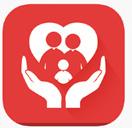

BetterHelp online therapy offers live sessions and convenient messaging to licensed mental health providers. With access to over 30,000 therapists, cost ranges from $60 to $90 per week billed every four weeks, but may be higher based on location, preferences and availability. (Apple/Android)
Talkspace Therapy and Support
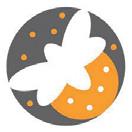
It offers stress and depression help, matching you with a licensed therapist in your state to message via text, audio and video for ages 13 and up. It partners with health insurance plans and companies across the U.S., so check for coverage eligibility. Talkspace also offers a self-directed therapy app. (Apple/Android)

Personal Safety
BSafe comprehensive personal safety app features a live “follow me” map feature, voice activation tools, automatic recordings and live streaming, in addition to an SOS button to alert contacts. It can even create a fake call to leave an uncomfortable situation. Users must enable location sharing services and designate invitations to family, friends or guardians who have agreed to track your movements. (Free download, Premium Weekly $0.49, Premium Annual $19.99, Premium Monthly $1.99, 24-hour Premium features $0.99; Apple/Android)
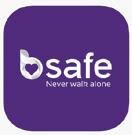
Life360 location sharing and GPS tracker helps you stay connected with friends or family and view each other’s real-time locations on a map with enabled location sharing. Features include SOS alert with your location to emergency contacts, driving safety options and more. (Free with in-app purchases, upgrade to a paid membership and get Tile Bluetooth tracker and 7-day trial)
BetterSleep helps understand and improve sleep with a sleep tracker, nighttime recorder, more than 300 sleep sounds and music tracks, more than 100 stories, and 200 soothing guided meditation playlists and timers/reminders. (Free download with in-app purchases, $9.99/month, $59.99/ year after free 7-day trial until you cancel; Apple/Android)
Headspace offers mindfulness, guided meditation and movement exercises to address stress, focus and sleep, including a new National Park Collection of immersive nature content (14 days free with $69.99/year, 7 days free with $12.99/month; Apple/Android)

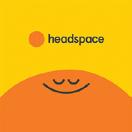
Calm for sleep, meditation and relaxation helps with sleep, stress, anxiety and attention through guided meditations, sleep stories, breathwork, exclusive music, soundscapes and stretching exercises. (Premium content with free 1-week trial, then $69.99/year, $14.99/month; Apple/Android)


Silent Beacon pairs a wearable bluetooth personal safety device to your smartphone or tablet to allow you to instantly call 911 or any number you choose while sending your live GPS location to multiple people at once. ($49.99 device sale price, subscription tier model; Apple/Android)
ICE Medical Standard lets you put your emergency medical contact information on your lock screen image overlay display for first responders and medical staff to find. Flag allergies and health conditions. The smartphone is regarded as a backup device for a physical ICE Medical Standard ID Card. (Free with in-app purchases; Apple/Android) Note: check your smartphone for built-in health app medical ID features like this.
ICE Contact free personal safety app delivers instant and delayed messages to friends and family with your GPS location In Case of Emergency. (Free, Apple/Android)

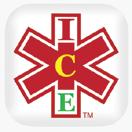

24 livespecial.com 2023-24 Continued from page 23
TASK MANAGEMENT, ORGANIZATION AND LIFESTYLE
Traditional smartphone apps include Notes and Voice Memos to record information as well as Calendar and Reminders apps that can be programmed to send alerts for important tasks or events. iOS devices offer the Timer function within the Clock app for a visual timer. Other options include:
Remember the Milk organizes, prioritizes and syncs to-do lists, tasks and reminders across devices and other apps, and allows you to attach files. (Free basic download, $39.99/year Pro Subscription; Apple/Android)

Done: A Simple Habit Tracker helps you set goals, break habits and build good ones with visual positive reinforcement. (Free version creates up to 3 habits, fees vary for premium and growth; Apple)


BEST Suite: 5 apps in 1 assists individuals with cognitive challenges to improve goal-setting, initiation, time management, self-regulation, self-esteem and productivity. PaceMyDay plans tasks to learn when to take breaks. ReachMyGoals sets personal measurable goals and reminders. StrategizeMyLife helps create and assign strategies and rate how well they work. CompleteMyToDos creates tasks with start and due dates, groups them into projects
organized by color and emoji, and adds images to tasks. CueMyList organizes and sets time limits for checklists and records personal messages as prompts. Online training is offered for the apps. ($9.99 with in-app purchases; Apple/Android)

Scanner Pro scans, organizes and shares documents, turning papers (receipts, IEPs, etc.) into PDFs on the go. It also allows you to annotate and search text. (Free with in-app purchases, Apple)

Evernote is an organizational tool for creating to-do lists, reminders, notes and more. You can clip the web, connect your Google Calendar, and attach text, images, audio and documents to make notes more useful. (Free version, fees vary for personal and premium; Apple/Android)

Time Timer offers visual time management with an iconic red disk that disappears as seconds go by. (Free; Apple/Android)

VISUAL/HEARING SUPPORT
Be My Eyes assists blind and low-vision people with video support from sighted volunteers and professionals. It allows for anonymous day and night free unlimited calls using a camera-enabled smartphone. (Ages 17 and up, Free with in-app purchases; Apple/Android)
InnoVoice real-time captioning for phone calls is funded by the Federal Communications Commission and comes at no cost to individuals with hearing loss. (Free; Apple/Android)
Envision articulates everyday visual information into speech to help the blind and visually impaired. Using a smartphone camera, the app can speak out written text from any surface (handwritten, printed on packages, books, etc.), describe surroundings, find objects, and tell you who is nearby using artificial intelligence and optical character recognition. (Free; Apple/Android)
Action Blocks makes it easier for people who have a cognitive disability to use Android phones and tablets. Add common actions to your Home screen with a name or image, then activate the Action Block — for example, a photo — to trigger calling a loved one, turning on lights, or other common actions utilizing Google Assistant. (Free, Android)

Instacart eases the burden of errands with home-grocery delivery or online ordering for pickup. Shop for groceries, household items, electronics and more. (Free Download and first delivery; Apple/Android)
Tile helps track and find misplaced things (keys, wallet, etc.) near and far away via Bluetooth communication between the mobile device and tiles attached to belongings (Free Download, Premium Plan for more robust finding; Android, iOS)

Mint: Budget & Expense Manager by Intuit helps track, budget and manage your finances. First-time budgeters can create one in a few clicks and stay on track with notifications. (Free basic version with many features, Premium $4.99/month; Apple/Android)
Examine broader app descriptions and user reviews, especially those from trusted industry professional organizations or publications, such as the American SpeechLanguage-Hearing Association (ASHA), or online family/educator resources like commonsense.org, educationalappstore.com, understood. com, teacherspayteachers.com and teachthought.com.

livespecial.com 2023-24 25
Living Their BEST LIVES
Four stories of local people with disabilities making strides to live life to the fullest
By Angela Gartner | Photography by Kim Stahnke
Everyone wants to be happy. They want the best for themselves, their families and communities. No matter who you are, and whether you have a disability or not, creating a space in your world that helps you thrive in your daily routine is important to your well-being and those around you. Here are four inspirational stories of Northeast Ohioans that provide a glimpse into their lives, but also hope that no struggle is too big to overcome if you have a positive attitude and the mantra, “live your own best life.”
Helping Kids Break Barriers at iCan Bike Camp
Volunteers run alongside the kids with helmets who are pedaling away at iCan Bike Camp at the Independence Field House. The camp provides people with special needs and their families an opportunity to spend a week learning how to ride a bike.
Jarmila of Solon, proudly watches her 8-year-old son, Ian, ride on the last day of camp with a big smile on his face.
“It’s great to see him make progress,” she says of her son, adding that while she was anxious at first, she now feels they are able to tackle bike riding and can help her son continue to ride.
Robert Fellinger, an elementary school teacher and coach who has been the volunteer director for 13 years, says he got involved when he volunteered
at the camp, because he just loved helping out.
“It’s such a positive experience; I wanted to help more,” he says.
The camp has room for about 40 participants, and Fellinger hopes to have about 2 to 3 volunteers per camper. He recruits volunteers such as high school students, who can earn community service hours, also college students and others in the community.
The camp is offered for one week in which kids who have special needs learn how to ride on tandem and roller bikes with the help of volunteers. The campers progress each day and by the end of the week, they can graduate to two-wheels assisted or unassisted, depending on their level.
While there is a camp fee, Fellinger says there’s support for those who

are unable to pay.
iCan Bike is part of a national program, iCan Shine (icanshine.org), which has other programs such as iCan Swim and iCan Dance. The iCan Bike staff is there throughout the week helping the volunteer camp staff with the campers’ goals.
Fellinger says that from the start of the week to the end of the week, parents and volunteers can see progress, even though some parents might have been nervous at the beginning of the camp.
“The science behind it is the roller bikes are teaching kids that you are able to go side to side without falling over; gradually, they build that confidence,” he says, adding that the dedicated daily practice starts working its magic. “That’s a rite of passage for these kids. There’s so
26 livespecial.com 2023-24
few things in a lot of their lives that they don’t have the freedoms that their typical peers would. I think it’s such a positive boost for kids; even for the ones who don’t get it by the end of the week — they still tried working on something that was challenging. It helps build confidence and shows them they can try things and get better. Try things that are uncomfortable and work toward a goal. We don’t always hit our ultimate goals, but we certainly make progress along the way.”
Visit icanshine.org or contact Robert Fellinger, director at iCanBike Camp in Cleveland at robfellinger@yahoo.com

Ms. Wheelchair of Ohio 2022
Krista Allison Wins for Herself and Advocacy Work
When Krista Allison, 41 of Berea, who works in the federal government, saw on social media the application for Ms. Wheelchair of Ohio in 2022, she decided to take a chance.

After being accepted into the contest, Allison spent a weekend in Mount Gilead, OH where she was crowned Ms. Wheelchair of Ohio of 2022.
“When he said my name, I didn’t even hear him because I was just expecting it not to be me,” she says about the moment she won. “He had to tap me and he said, ‘You’re Ms. Wheelchair of
Ohio 2022.’ I started tearing up and at that moment, it was like everything that I had worked on just came to fruition.”
Ms. Wheelchair America is a national competition based in Michigan. Each year, states hold their own competitions, naming winners before a national winner is chosen. According its website, it provides an opportunity for women who are wheelchair users to educate and advocate for people with disabilities.
Allison, who lives with Charcot-Marie-Tooth disease, has type CMT4J, a rare genetic condition that impacts the nerves that control muscle movements in the feet and hands, according to the Cleveland Clinic.
Allison, now a former Ms. Wheelchair of Ohio, says that night she told herself, “I’m going to make Ohio proud and I’m going to do whatever it takes to share my platform and to talk to whoever I can.”
Her platform is community accessibility, which she chose because “accessibility affects everyone, whether they’re disabled or not.”
“I wanted to pick a platform that could reach as many people as possible,” she says, adding that she was tired of making plans to be in the community and worrying about if places were accessible to her or not. “This affects everyone’s well-being.”
Allison used the opportunity to begin meeting with communities and their leaders to talk about accessibility.
she had a special interest, for example, A Special Wish of Northeast Ohio, which grants wishes for children who are battling life-threatening illnesses.
As someone in law enforcement, she also wanted to help people with special needs and wheelchair users better connect with emergency services when in need. She has helped implement a Residential Disability form in 25 cities that provides information about the person living in a home, so the proper resources are dispatched if that person needs special assistance.
“My goal is to have the entire state of Ohio utilizing it,” she says. “It’s an indepth and voluntary form that goes out to any of the community members.”
on accessible pathway.
She says she talked to about 30 mayors around Ohio, joined city mom groups on social media, and spoke at different organizations, hospitals, school districts and youth forums about accessibility measures. She also has given feedback on how to implement strategies.
Allison also organized a few fundraisers for organizations in which
While Allison’s reign is over, she still plans to spread the word and keep the conversation going.
“I just want to continue talking to whoever will want to talk to me,” she says. “I think the biggest advice I could give — and I say it every time I talk — is that people have to realize we all have a voice. You just need to use it. I just really want people to get educated to understand that not everybody is the
livespecial.com 2023-24 27 Continued on page 28
Ms. Wheelchair of Ohio 2022 Krista Allison at Cleveland Metroparks Edgewater Beach
Ian, 8, at iCan Bike camp practicing his new skill with a volunteer on the last day of the camp.
Continued from page 27 same, that everybody deals with something, whether it’s visible or not visible. People should start thinking outside of the box and realize that we’re all different, but we all deserve to be treated the same.”
Brandon Johnson is Living His Best Life as a Young Adult
Brandon Johnson, 22, has a few specialties at Munch Simple Kitchen, a Solon restaurant owned by Jamie and Scott Hersch (munchasimplekitchen.com),

His mom, Tanya Johnson, says Brandon was at Giant Eagle at Legacy Village for two years before going to Munch.
“Brandon wanted to learn how to cook and work in a restaurant,” she says.
"I'm having fun," Brandon says about working at Munch. "I like to cook, it's fun to cook."
Scott Hersch says that since Brandon started making pita chips, it has become a favorite. In addition, his famous “Brandon’s Lemonade” has been a staple at the restaurant ever since he volunteered to make it.
“Brandon is the lemonade king,” Tanya Johnson says. “I mean, he
makes our lemonade at home. He will not let me make it. So he’s not shy by letting you know what he likes to do. And I’m glad that he spoke up for himself and let them know that he knows how to make good lemonade.”
Not only does he make the pita chips and the lemonade, but Brandon says he also cleans the tables and chairs.
Tanya Johnson says Heidi Solomon, from Horvitz YouthAbility at Jewish Family Service Association of Cleveland, helped connect Brandon with Munch. YouthAbililty has worked with the Hersches to employ other people with disabilities. YouthAbililty works with young people with disabilities to provide volunteer and vocational opportunities, as well as social enrichment.
Brandon, who has autism, has been working at Munch for about a year, and the Hersches are happy to have him.
“To have people like Jamie and Scott who are employing people like Brandon — and he’s doing great work for them — is great because some employers might not know what a great opportunity it is to have someone like him work for them,” Tanya Johnson says.
Jamie Hersch notes how Brandon works hard and provides more than his work in the restaurant, but has shown others what people with disabilities can do.
She says having him working there has taught them and their customers about this community.
“He really loves it there," Tanya Johnson says. "So I’m grateful to Jamie and Scott for giving him that chance and I’m glad that it worked out for him.”
She adds, “We’ve been blessed that we found a lot of programs through our county support administrator. It’s just a matter of asking and, if you get a door shut on you, to ask someone else. It can be hard to find, but they’re out there.”
When Brandon isn’t working, his mom says he’s busy with video games, YouthAbility's singing engagements
and trips, going to summer camp, and art and karaoke,
"He is living his best life." she says, adding Brandon recently entered the dating scene and he's on an app called Connect to One (connectcle.org), which is for people with special needs looking for friendships and dating relationships.
She advises other parents not to stand in the way of them growing up.
“They’ve got to grow up and we have to accept that they’re going to become adults, so we can’t baby them,” she says.” We’ve got to push the envelope as parents to give them every opportunity possible, because they learn differently — but it doesn’t mean they can’t learn. You really have to prepare them for being in the real world. They’re going to experience things just like everybody else; they’re going to experience disappointments and let downs. What may work for your child may not work for somebody else’s, and vice versa, so you have to learn what makes your child tick while putting expectations in place and making sure that they understand.”
Raising a Child with Autism to Be Their Best Self
Four-and-half-year-old Mattea runs from one piece of play equipment to the next at We Rock the Spectrum in Mayfield, an indoor playground that provides opportunities for children with special needs to have a safe place to be themselves. Her mom, Marie Burke of Kent, watches Mattea jump on the trampoline, something that she enjoys.
Burke says that Mattea’s autism diagnosis at age 3 was scary as she started the process of getting information on school and therapies.
“We have to accept things as best as we can for her to bring out her capabilities,” Burke says, adding that the biggest difference has been putting her in school at Thrive Early Learning Center in Warrensville Heights.
“She gets so many therapies, and lessons, which are incorporated into everything they do. We’ve seen a huge difference in her,” Burke says, adding that she’s always read to her children, including her 12-year-old daughter who has ADHD, and also does ABCmouse.
The one thing she would like to do
28 livespecial.com 2023-24
Brandon's homemade lemonade is a restaurant staple at Munch's in Solon.
Mattea enjoys her playtime at We Rock the Spectrum in Mayfield, an indoor play center that serves children of all abilities.

more with Mattea, as she was excited to recently discover We Rock the Spectrum, is to provide opportunities for her daughter to get involved in the community.
“I would love to get her into some
activities with other kids outside of school.” Burke says.
“Right now, we’ve talked about dance class, but we have yet to find one. She loves to dance and that’s something I want to get her in right now. I’d love to get her riding a bike and just doing some of the milestone things that neurotypical kids do. I would love to go on a vacation with her. The big vacation that I want to do with her is Disney — and they do a lot of accommodations for many disabilities, but definitely for autism.”
Like any parent, she has been working at finding resources for her daughter and dealing with different challenges related to Mattea's autism diagnosis, whether it’s a transition, meltdown, or stressing about the various to-do lists
of therapies and routines.
Burke says she has been meeting and talking to people and has realized that there are many parents of kids who have autism. While they are sharing resources, it can be a struggle as a working mother to devote enough time to finding things.
“I hope that nobody would ever feel ashamed, but I think it’s okay to talk to as many people as you can, because that’s how I have found all these (resources),” Burke says. “The more you talk to people, the more you find out. I think the other piece of advice is for people to not be afraid to ask for things, like at a doctor’s appointment; ask as many questions as you can for the things that you need, because you are their advocate.”
While her family is just starting the process, Burke is learning along the way how to navigate having a child with autism.
“Whatever Mattea’s capability is, I hope it comes through, which we’re seeing already,” she says. “I love her energy and I think that she could be enthusiastic about most things. I just want her to be her best self.”

livespecial.com 2023-24 29
INCLUSIVE PLAYGROUNDS Around the Region
Accessible places to play and how to prepare for your day
 By Jeannie Fleming-Gifford
By Jeannie Fleming-Gifford
Playgrounds provide the perfect opportunity for family and budget-friendly explorations. If you are seeking new parks with accessibility to all, you’re in luck. There are playgrounds throughout Northeast Ohio where you can ensure access to fun with wheelchair accessible ramps, ADA swings, and other features that provide all children a chance to learn, grow and play. Below are parks located in Cuyahoga, Lake, Medina and Summit counties where you can be sure to find great places to play.
30 livespecial.com 2023-24
Before you start off on your explorations, here’s a quick list of tips to help you and your family have an enjoyable experience.
. Pack the essentials: water and some easy-to-eat snacks.
. Sunscreen can be done at home before the outing, but plan to
reapply if you stay longer than expected. Another way to protect children from the sun is to have them wear hats or other sun-protection clothing.
. Just in case, be prepared with a change of clothes. Some parks provide
Cuyahoga County
LIBERTY PLAYGROUND - INDEPENDENCE
6363 Selig Blvd., Independence independenceohio.org
Designed for ages 5-12 years, this play structure includes multiple slides and climbing structures on a poured-in-place rubber surface, plus two racing zip lines. This park also offers a newly designed space for ages 2-5 that includes slides and climbing structures, an accessible sand table, musical panels, and an accessible spinner. This park also includes swings and a climbing wall.
PARKVIEW PLAYGROUND
25 N. Commons Blvd., Mayfield Village mayfieldvillage.com
Built in 2020 and located in Mayfield Heights, this inclusive playground features a rubberized play surface and unique equipment including slides, climbing structures, a sand area, a variety of swings, and even a water feature that sprays mist for cooling off.
great sensory-friendly explorations. Explore it all and be prepared just in case of the mess.
. Be sure your child is ready to explore safely, whether it’s the right shoes, clothing or other equipment to help them adventure without worries.
. For many children with special needs, independent playtime can be important. Consider dressing in similar bright colors so you can spot your child and your child can easily see you.

PLAYGROUND OF POSSIBILITIES
1632-1660 Miramar Blvd., South Euclid cityofsoutheuclid.com
A unique find, this playground is castle themed, includes a variety of playhouses, and is fully accessible. This fairy tale-inspired park also includes a treehouse, animal spring toys, ADA swings, and even built in “old school” games like checkers (bring your own game pieces).
PRESTON’S H.O.P.E. PLAYGROUNDBEACHWOOD
26001 S. Woodland Road, Beachwood prestonshope.com
This 60,000-square-foot accessible park offers sand, swings and an “Imagination Village” made up of six small buildings that provide a small town feel for inspiring imaginative play. The park has something for all ages and all abilities, and is located on the Mandel JCC Beachwood Campus.
Continued on page 32
livespecial.com 2023-24 31
Now that you are packed up, you are ready to head out for some fun.
Continued from page 31
Lake County
MIRACLE LEAGUE PLAYGROUND - EASTLAKE
35200 Vine St., Eastlake miracleleagueoflakecounty.org
The Miracle League Baseball Field and Inclusive Playground is located near Classic Park (home of the Lake County Captains baseball team). The park features a latex-free surface, ramps for wheelchairs, and an igloo for some quiet time or imaginary play. A highlight of this park is an adjoining accessible ball field that gives children and youth with physical and mental disabilities a safe place to play baseball.
Medina County
CAROLYN LUDWIG MUGRAGE PARKMEDINA
4985 Windfall Road,Medina medinacountyparks.com
This park offers a multipurpose paved trail, pond, accessible fishing pier and a playground. The inclusive playground with wheelchair ramps is situated on a rubber safety surface. The StoryWalk, maintained by the Medina County District Library, provides an opportunity to enjoy a story along the trail and continue to support your child’s reading while having some summer fun!
Summit County
SOAR FULLY ACCESSIBLE PLAYGROUND - STOW

5027 Stow Road, Stow stowohio.org
This park includes basketball, tennis, volleyball and soccer fields located in the front section of the park. In the back of the park is a large, fully accessible playground with a rubber surface. The playground also includes accessible swings.
Jeannie Fleming-Gifford is a mom, blogger (“Simplicity Soup” at NEO Parent), non-profit executive, arts advocate, writer, coffee consumer and wannabe adventurer. Contact her at fleminggifford@gmail.com
Scan for listings of local playgrounds

32 livespecial.com 2023-24


livespecial.com 2023-24 33
Dealing with BIG MOVES
By Angela Gartner | Photography by Elaine Eisner
For any child, whether it’s moving to a new house or changing schools, it can be an emotional time. Some handle it better than others. For children who have special needs, there might be extra considerations to make those big transitions a little smoother for the child — and parent.
Alana Gohn, 14, of Solon, is making a big move this year, she and her family will live in a new house. Alana was diagnosed with microcephaly as an infant, which according to the Mayo Clinic, is a rare neurological condition in which an infant’s head is much smaller and occurs when there is a problem with brain development.
Her mom, Elaine Eisner, who had dealt with Alana’s transitions before, including her daughter aging out of elementary school, is a little worried, but has some plans to help Alana feel comfortable with the move.

“We want to make things as normal as possible,” Eisner says.
They decorated Alana’s room exactly the same as her old room. They also
created a social story, which shows Alana pictures of her new room and house to help with understanding the move, since Alana is nonverbal.
Eisner suggested n2y (n2y. com), which is a social story or narrative provider that has other tools to help families.

“Kids with special needs, a lot of times don’t like the unexpected,” says Erin Hinkel, information specialist and trainer at Ohio Coalition for the Education of Children with Disabilities (ocecd.org).

“They can see what is going to change and what is coming with a social story. It’s very helpful for transition(s)."
She suggests to do whatever that child needs to help with the change.
"Some kids are going to need pictures with very little words and for some, it’s all going to be words," she says. "It just depends on that child.
Keep showing that story over and over, just so they know something’s different, something’s coming, so it’s not a surprise.”
34 livespecial.com 2023-24
Alana, 14, is enjoying the outdoors.
Hinkel provides these additional tips below for families that are moving or transitioning to a new school.
Tip #1
Keep Comfort Items Close
Make sure your child has something with them during the move that is important to them. She notes maybe it has their smell on it, like a teddy bear or something familiar from the old environment so (the transition) doesn’t feel as stressful.
Tip #2
Take Care of Yourself
Make sure you have friends or family that you can lean on for support. Hinkel adds so if you need a little break for yourself, you are going to get that break.
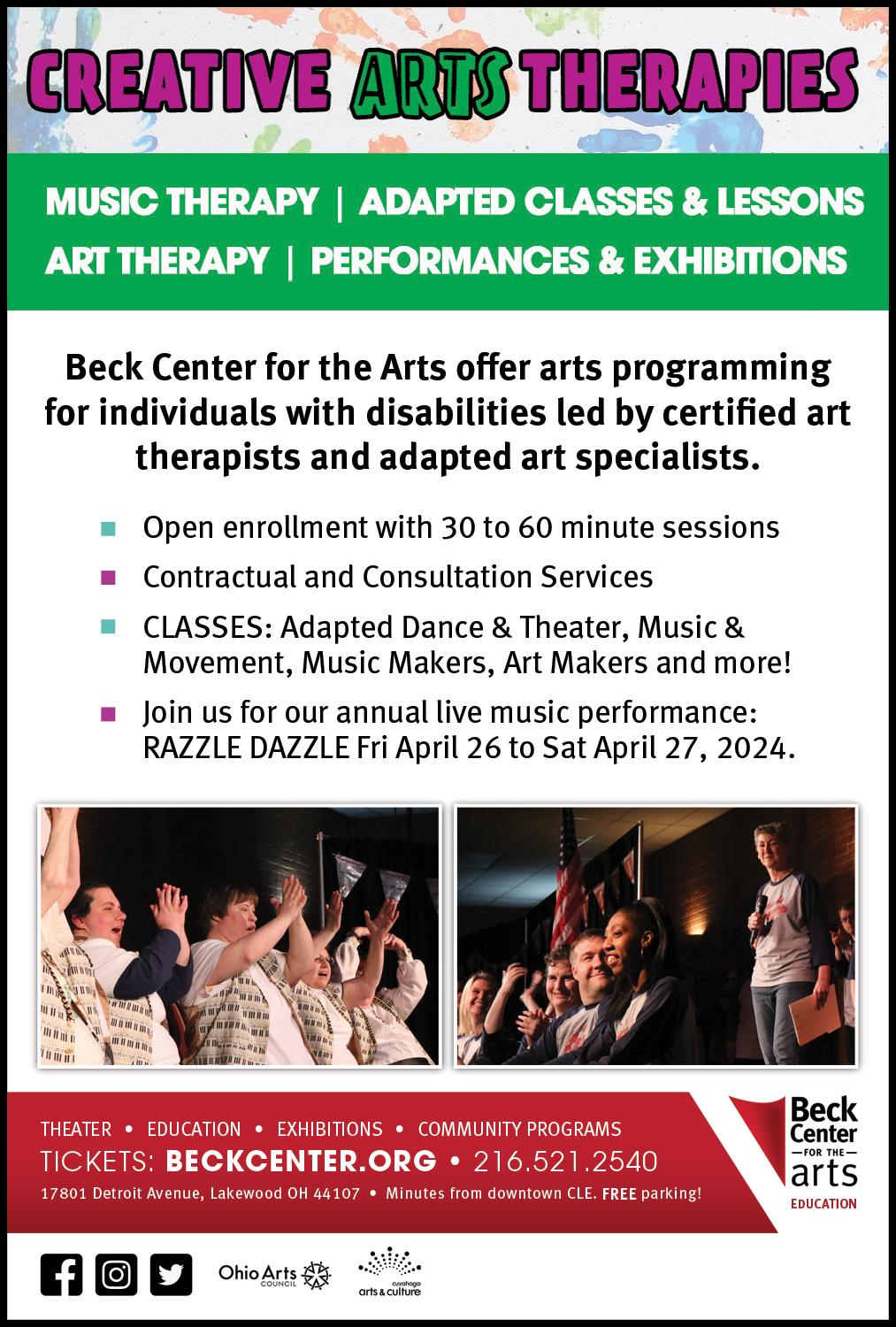
Tip #3
Structure is Important
Try to bring your routines with you, and get them up and running as soon as possible. "A lot of these kids really do need that structure to be able to function and not have as many (unwanted) behaviors," Hinkel notes.
Tip #4 Get Extra Support if Needed
Make sure everyone (whether at the school or therapy) knows what is happening. So if you or your child needs extra support during the transition, it’s there when you need it.

Tip #5 Take Them to the Neighborhood or School Playground
If you are moving to a new school, walk the route, play on the playground or walk around the school building before school starts. Talk to your child about the school and what they might see and where they might be. Some school administrators might let you walk through the building beforehand. If you are moving into a new home, explore the neighborhood with your child. Visit a local store or ice cream shop, etc nearby, Hinkel notes. Talk to your child about the neighborhood and show them the house, even if you can’t get inside the new place, just yet.
Tip #6
Invite Old Friends Over
To make your child feel comfortable about moving into a new home, invite their friends who are familiar with the old neighborhood to come to the new one, Hinkel notes. Your child might feel comfortable seeing familiar faces and ones who might also be excited to see the new neighborhood and yard.
livespecial.com 2023-24 35
Understand and Find Appropriate Respite Care

What caregivers need to know about finding their loved one’s future general care or respite needs
By Faith Boone
Finding respite care for young and older individuals with special needs can be tricky. Young individuals with special needs, as well as those growing older, may need respite care at some point in their lives to offer caregivers breathing room to recenter themselves to best care for their loved ones. Due to a number of factors, it’s becoming more difficult to find the proper care for this population.
LACK OF AWARENESS AND INFORMATION
Some families and caregivers may not be aware of the existence or availability of respite care facilities. Information about these services may not be easily accessible or adequately communicated, resulting in a lack of utilization.
Jesse Jean is the Cuyahoga County Divisions Director for Consumer Support Services, which contracts with the Cuyahoga County Board of Developmental Disabilities as a respite provider, staffing the location with four respite beds.
Jean says a big factor in why it’s difficult for families to find respite care for their younger and older family members is due to not knowing where or how to begin the process.
“For many, the whole process can be overwhelming,” Jean says. “I always encourage families who reach out to us to
36 livespecial.com 2023-24
begin with their local county board of developmental disabilities. There are service coordinators available to assist them throughout the process. Due to demand, this may not happen right away, but continued perseverance and patience is the best course of action.”
Craig Thomas, senior director of clinical services at the Western Reserve Area Agency on Aging, supports the organization’s home and community-based waiver service programs. Thomas says WRAAA often comes across a need for respite services, both outside and inside the home. He agrees with Jean that one of the first difficulties for families is having the initial conversations around respite care, as they often are met with resistance and fear.
“It is important first to have the necessary conversations on what respite can do in the long run to help people remain safely in their homes, and then to move to a planning phase,” Thomas says. “Not knowing the available resources, locations or specialties can be a difficulty in making respite decisions.”
LIMITED AVAILABILITY AND FUNDING
There often is a limited number of respite care facilities available, especially those specifically designed to cater to individuals with special needs. The demand for such services can be high, while the supply is relatively low. Also, respite care facilities require funding to operate and provide necessary services, but financial resources allocated to respite care programs may be insufficient or inadequate.
Continued on page 38
RESPITE CARE RESEARCH & ALTERNATIVES CHECKLIST
To ensure you’re exhausting all options when it comes to respite care for your loved ones, we’ve created a checklist of resources to help you find the best fit for your family. Also, here are a few important definitions to have handy when doing your research.
0 Respite Care: Temporary care in a facility or at-home of a sick, elderly, or person with disabilities, providing relief for their usual caregiver.
0 Assisted Living: For individuals old enough and willing to live on their own with some assistance with instrumental activities of daily living.
0 In-Home Care: Individual lives at home and a small team is organized to help with daily activities assigned on an intermittent basis.
0 Board and Care Homes: Helping individuals with mild to moderate memory challenges.
0 Adult Day Care: Facilities for adults that receive around-the-clock assistance from the staff.
6 THINGS TO CONSIDER WHEN STARTING THE RESPITE CARE JOURNEY
1.
Have the Conversation Early Life emergencies happen at any time. Start reaching out to resources and contacts so you can have locations identified when needed. This is also a good time to decide what kind of respite care is required.
2.
Exhaust County & State Resources. Reach out to offices such as your Consumer Support Services or Board of Developmental Disabilities to discuss your respite care needs. This can help you make the best decision and appropriate fit for your situation.
3.
Do Your Research. Use online resources to identify facilities near you or organizations offering in-home care. Ensure you review the available amenities and if they will properly accommodate your loved one.
4.
Ask about Staffing, Activities, Capacity, and Environmental Concerns. You want your loved ones to be comfortable wherever their care is provided. Make sure you have your loved one's needs and daily routine in schedule when making your decision.
5.
Get Answers on Medical/Behavioral Health Support. Find out if therapy options are available concurrent to the respite stay, ask about visitation options, and consider other factors that are critical to the mental health of your loved one.
6.
Discuss Payment Options. State and federal funding, as well as private sources, may be available to you to pay for respite care. Generally, every state offers some respite assistance through Medicaid waivers. Medicare does not cover adult day care services, but Medicaid can foot the bills from a licensed center. There are also faithbased organizations that offer respite care services.
livespecial.com 2023-24 37
This makes it challenging to establish and maintain these facilities. Limited funding can restrict the number of available spaces and the quality of care provided. This can result in long waiting lists and difficulty securing a spot.
Respite care facilities also are too often concentrated in specific regions or urban areas, making it difficult for individuals in rural or remote locations to access these services.

Jean says county service coordinators can help families seeking funding, location information and availability for family members in need of respite care.
SPECIALIZED CARE REQUIREMENTS
Individuals with special needs may have unique and complex care requirements. It can be challenging to
RESPITE CARE AND ALTERNATIVE SUPPORT RESOURCES
find respite care facilities that have staff trained to handle specific conditions or disabilities. Many facilities may not have the necessary resources, expertise, or staff-to-patient ratios to provide appropriate care for individuals with diverse needs.
Jean says it’s important to ask about staffing, daily schedule, activities, capacity, environmental concerns, and projected duration of the respite staff.
Thomas says discussing all needs is crucial. He mentions options such as adult day care services that can be a “daily” respite option.
“Make sure to ask about those things most important to your loved ones — be it food/menu items, activities, visitation guidelines, room privacy, technology/ television/games, etc. — all
• Cuyahoga County Board of Developmental Disabilities Family Supports Program

Available to children and adults of all income levels eligible for Cuyahoga DD services living at home with a family member or on their own. Learn more Call 216-736-2947 for more information.
• Catholic Charities Diocese of Cleveland Parent Respite & Support
Provides additional support and resources to parents and caregivers of individuals with developmental disabilities residing in Ashland and Wayne Counties. Learn more Call 330-641-6316 for more information.

• City of Cleveland Department of Aging Local Resources for Caregivers
Information on respite care providers, Medicaid and Medicare support, kinship care, adult day care programs, and more. View here Call 216.664.2833 for more information.
• Arch National Respite Network and Resource Center - National Respite Locator Service
Search portal to help you find respite care and appropriate alternatives in your local community through your State Respite Coalition or Lifespan Respite Program or through resources including State Provider Registries or the Eldercare Locator. Use now Call 703.256.2084 for more information.
38 livespecial.com 2023-24
Continued from page 37
those things that you know they would want to have for a successful respite stay,” Thomas says.
Thomas agrees with Jean that asking about the actual medical and behavioral health supports needed is critical to the health and well-being of the individuals needing care.

Addressing these challenges from a higher level requires increased funding and support for respite care programs, enhanced training for caregivers and facility staff, improved accessibility in rural areas, and awareness campaigns to educate families about the benefits and availability of respite care services.

Jean adds it’s increasingly important for community organizations to break down communication barriers.
“Establishing rapport

with the surrounding community is big,” Jean says. “Communication is vital to helping the community become inclusive for our population.”
Thomas says partnerships across programs and agencies is crucial, as each program may have some difference and unique implementations.
“Our screening and assessment process always includes the prospect of making referrals to other community and partner organizations to make sure the needs of the individual are met,” Thomas says. “Our state has multiple waiver programs and oversight entities (Medicaid, Aging, DODD, Managed Care Plans), so it really is incumbent on us to always be providing updated accurate information that can span the programs.”
livespecial.com 2023-24 39
SERVICES & SUPPORT TO HELP EVERYONE BE THEIR BEST SELVES
EARLY INTERVENTION FOR CHILDREN
The first three years of life are the most important for a child’s physical, mental and emotional growth. Early intervention services for young children with a qualifying medical diagnosis or developmental delay are available from the Cuyahoga County Board of Developmental Disabilities (Cuyahoga DD). With planning from Bright Beginnings, Cuyahoga DD helps young children get the best possible start in life. Applying for services now can reduce needs for special education later. If you are looking for more Ohio intervention services, visit Help Me Grow, helpmegrow.ohio.gov.
FAMILY SUPPORTS FOR CAREGIVERS
The Family Supports Program can help caregivers seeking assistance to purchase certain goods and services.
It provides funding for many items and services including respite care, leisure and recreation program fees, and incontinence supplies. This Cuyahoga Board DD program provides funding to children and adults of all income levels who are 1) eligible for Cuyahoga DD services and 2) living at home with a family member or on their own. Eligible individuals can receive between $750 - $1,500 per year. Live outside of Cuyahoga County? Call your county board about their Family Supports Program.
A CHANCE FOR SMART AND SUPPORTIVE LIVING

Assistive technology is a great option for people with developmental disabilities who want to live on their own in a supported environment. TryTech Apartments, in the heart of Lakewood, are smart apartments in an integrated building on a short-term lease, where people can try tools and technology they might want to use in their future daily home life for mealtimes, entertainment, security, well-being, self-care and more. During and after their stay, Cuyahoga DD support administrators and assistive technology staff will assess their needs and determine next steps for achieving the goal of independent living.
Cuyahoga DD offers many programs and services that help people with Developmental Disabilities (DD) to live their best life. To learn more, please call Cuyahoga DD at 216-241-8230 or visit cuyahogabdd.org.

40 livespecial.com 2023-24
Advocacy
FOUR WAYS TO AVOID PARENTING BURNOUT
By Karla Fitch, MSW, Connecting for Kids Creative Director (she/her)

Caring for children is not easy — and balancing your own needs with your child’s can seem downright impossible. But without self-care, you may also face a high risk of burnout. So how can you do both?

1. COMMIT TO SELF-CARE. This means taking time for yourself during the day or week, whether you get a coffee, hit the gym or watch a livestream event of your interest. Support groups are also a great way to help families to connect and support each other over shared concerns about their child. You can find groups that include general topics like coping with loneliness and stress, support for families of children with complex needs, Black American families, families with LGBTQ+ children and more.
2. PRIORITIZE YOUR MENTAL HEALTH. Many caregivers feel like they don’t have time for counseling, but having an ongoing relationship with a mental health provider can help you to overcome obstacles that may be holding you back. If you can't get out of the house, many offer virtual sessions.
3. ASK FOR HELP. Asking for help can be hard, but with resources offering caregiver support, you don’t have to
go far. For example, the options cover a variety of services, like caregiver respite from an organization like The Shepherd’s Well; (shepherdswell. org) something for the whole body, like Seed Yoga; (seedyogaohio.org) or culturally and spiritually affirming support from groups like Mother 2 Mother (mother2mother.info/) and REACH Services (reach4services.com)
4. LOOK INTO RESPITE. Whether you sign up for a short respite event from a local organization like We Rock the Spectrum (werockthespectrumcleveland. com) — or go for a weekend retreat with Achievement Centers (achievementcenters.org/) or Akron Rotary Camp (gotcamp.org) respite can provide a much-needed break. For more respite resources, visit connectingforkids.org
livespecial.com 2023-24 41 Family Matters
PHOTO COURTESY OF CONNECTING FOR KIDS
Planning
ARE INTENTIONAL COMMUNITIES AN OPTION FOR HOUSING?
Few transitions bring more fear and change than moving out, and that trouble doubles for kids with special needs. In general, housing options fall into four categories: living with family, independent living, congregate settings, and newer intentional communities.

Living with family is always the most comfortable setting, as it is what people are familiar with. In Ohio, 65% of adults with developmental disabilities live with their parents or family.
Intentional communities, like Solon Community Living, provide a middle ground, offering opportunities for independence while having the structure and engagement that often is not provided within congregate settings.

Intentional communities are not new. The foundations of them can be seen throughout the history of society, although the first modern community is generally believed to be a L’Arche community, built in 1964.
By Logan Andress
These communities are generally built by parents and vary in size from 8-10 people all the way to hundreds of people being served. They allow for sharing of services, oversight, and to be able to build a community of families who are engaged in wanting a different standard for their loved ones. Additionally, families have more intense interest in setting care and activities for the community, creating a more personal calendar and interest-based approach to the development and care within the community. According to the Foundation for Intentional Communities, there are presently, at least,1,450 different
intentional communities in just the United States. In creating Solon Community Living, we looked at over 25 different communities across the country and created our own model, encompassing elements of those communities that we felt were best practice and making it our own.
Funding for these communities come from various sources, often starting with family resources. Any public funding through housing or Medicaid is limited at present and cannot be counted on to create these communities. Whether through philanthropy or public-private partnerships, the funding piece is a collaborative effort from the surrounding community.
As you look toward future planning, there is so much that goes into the process, from having a frank discussion about what can be afforded to what elements of independent living are most important.
42 livespecial.com 2023-24
Planning
READY TO GRADUATE CHECKLIST
Questions to help high school students prepare for adulthood
Do you know a high schooler who is unsure of their next steps? Many high school graduates are not ready to make decisions on life goals or don’t quite have the skills needed to feel capable and confident to make them happen. Nearly two-thirds of the 22 million working-age Americans with disabilities have been left out of the labor market, according to the National Council on Disability’s 2020 Progress Report on National Disability Policy: Increasing Disability Employment.
Consider asking your high schooler the following questions to help facilitate discussions about how to reach these goals.
6 Share your dreams and goals for life after high school.
6 Do you have a typical daily schedule and supports provided so that you can be successful?
6 Are your education and activities aligned with your goals for the future?
6 Are you supported by friends and meaningful relationships in and out of school?
6 Do you have the supports necessary to succeed at a job?
6 Are you participating in community activities?
6 Are you planning to graduate high school after your senior year and continue to receive supports in your community through the school and adult systems until age 21? If so, do you have a plan for what services you will receive and from where, such as vocational habilitation?

6 Are you feeling supported enough to plan for work and recreation choices after completion of your senior year in high school?
Providing your high school student with community volunteer experiences, self-advocacy instruction, and recreational and social activities helps them have a place of connection that allows them to achieve their potential. If your loved one has not yet graduated, meet with programs like SAW, Inc.’s Next Steps, school team members and family to discuss post-graduation goals based on their interests, goals and the support needed. If your loved one has already graduated, programs like SAW Inc. can meet with you and your team members to discuss desires and develop strategies to help them reach their goals.
SAW, Inc.’s Next Steps is a results-oriented program for youth with developmental disabilities who are transitioning from school to adulthood. It’s a safe model that develops the skills and confidence needed to meet adult goals while participating with other young adults crafting their own futures. Learn more by contacting Laura Cooper, COO at cooper.laura@sawinc.org or 216-861-0250, sawinc.org

livespecial.com 2023-24 43
Planning a Sensory-Inclusive Party
 By Erin Sernoffsky
By Erin Sernoffsky
For adults and children with sensory sensitivities, parties can be a minefield of dysregulating stimuli. Games, crowds, noise, lights and sky-high expectations can easily turn a fun day into an immensely stressful situation. Planning a sensory-inclusive event can feel daunting, but a few steps go a long way in making your party more inviting. When in doubt, simply remember the who, what, when, where — and most important, the why — of planning.
WHO
The first, best step in creating a sensory-inclusive event is open communication. A simple text or call explaining your plans and asking what you can do to make it as comfortable as possible helps guests and parents set expectations and know that their experience and enjoyment matters.
“It is important to broach the topic with understanding and respect,” says Allison Pluskota, MOT, OTR/L, an occupational therapist with Sendero Therapies. “You are asking in order to provide support, so be open and avoid judgment.”
This communication is especially critical for children’s parties, where guests may not be able to articulate their needs.
“Always consult with the parents of all children planning to attend,” says Pluskota. “Additionally, depending on the child’s age, the child themselves can even be consulted and included in the planning process. This allows for the child to feel included and addresses their sensory needs, as well.”
44 livespecial.com 2023-24
WHAT
Flexible schedules and activities are great for sensory-sensitive guests. Pluskota recommends “offering multiple activities that can cater to different levels of sensory preference.”
For younger party goers, this can mean stations for open-ended play like bubbles, a water table, Legos, or a kiddie pool filled with dried corn kernels. Kids can play together or independently with various calming textures. Pluskota cautions against anything smelly, sticky or slimy. You may also think about forgoing the birthday song or opening gifts in front of the group.
Silent disco is an amazing trend, perfect for teens or adults. Companies offer headphone rentals that dancers use to select their own music and volume. Game nights are another hit, with group options like Two Truths and a Lie, Qwirkle, Heads Up, or Cards Against Humanity. Party-specific Mad Libs are easy to make yourself and are fun independently or in a group.
Movie night is perfect for any age and is a great way to utilize big pillows, heavy blankets, and snacks with various textures. Have a set of earplugs on hand and be sure to check with your local library, as many offer rentals for projectors and screens.
Pluskota stresses that options are key. “Again, we are giving our neurodiverse friends control of their environment,” she says.
WHEN
More isn’t always better. For younger groups, consider a shorter party so kids can participate in all activities and head home before it becomes too overstimulating. This isn’t always possible or preferable, so in the case of a longer celebration, consider going the extra step to build in more quiet areas, sensory supports and breaks.
WHERE
When scouting locations, consider the sensory environment. Find out if the staff is trained to be supportive of guests with sensory needs. Consider renting pavilions at metro parks or playgrounds, or opt for a backyard celebration.
“Some common pitfalls include holding an event in an overstimulating environment with loud noises, or flashing or bright lights,” says Pluskota, “or ignoring the need for sensory breaks.”

Northeast Ohio is home to so many great options for sensory-inclusive locations for your celebrations. Some of them include
- Akron ArtWorks
- Akron Zoo
- Children’s Museum of Cleveland
- Cleveland Metroparks
- Playhouse Square
- We Rock the Spectrum
- Summit Metro Parks
Find more at livespecial.com
These breaks provide guests with a small escape and can be as simple as access to the outdoors or the ability to go for a walk, a photo wall or albums away from the center of activity, or a space for quiet two-person games. For kids, a small pillow fort stocked with weighted blankets and fidgets, or a craft table with crayons or sensoryfriendly toys provide a calming place to regulate.
WHY
Let go of the prescriptive image of what parties are supposed to be. At the end of the day, parties are a wonderful way to gather with your loved ones and let them know they are an important part of your life. The goal is to create a meaningful experience, not recreate what’s always been done before.
livespecial.com 2023-24 45
Created by Dong Gyu Yang from the Noun Project
A Roadmap to Wellness
Supporting Mental and Physical Health
 By Jeannie Fleming-Gifford
By Jeannie Fleming-Gifford
46 livespecial.com 2023-24
In a small dance studio located in Geauga County, I attended an exercise class. The inclusive class was envisioned and coordinated by NPower (npowerservices. com) founder Lori Weber, a mom with an adult daughter who has autism.
The class was facilitated by a CrossFit professional. The room was filled with energy, laughter and people of all abilities simply giving it their best in that moment. Caregivers supported and encouraged people challenged with their mobility, and we all rooted for every single person in the room to give their best effort.
All abilities can be successful and find personal growth when given the opportunity. Just as importantly, the road to wellness can have more than one lane — one for a person with special needs and another for the caregiver. Being a role model in our own health and wellness is one way in which we can also support those with special needs to stay on a path to good health.
Individuals with special needs may face more specific health challenges, but the prescription for taking care of emotional and physical health is similar as it would be for most of us.
Where to Start?
Help them get connected and involved. There are a variety of groups throughout the area that provide health and wellness programming for those with special needs, from the YMCA and local park systems, libraries and arts centers to county boards of disabilities and individual organizations like NPower Services. Each of these organizations offer programming (many times for free or reduced fees) that provides both specialized programs for those with disabilities and/or inclusive programs that can engage the whole family. The benefits of belonging to a group and participating result in positive mental and physical benefits.
Find activities for the homebound. Many programs are still offered online, from Zoom to live-streamed events. Many organizations continue to connect with those at home, offering exercise classes, music programs and more. Reduce screen time. As caregivers, sometimes screen time saves us. We need a few minutes to take care of something and/or simply rest. Plus, a little screen time is okay. However, significant screen time has shown to have an adverse effect on both physical and emotional health. Seek simple activities as an alternative to screen time.
• Depending on the skills of the individual, simple (no-mess) arts and crafts can provide engagement and even strengthen fine motor skills. Many art suppliers carry adapted art supplies (for example, check out Blick Art Supplies, dickblick.com)
• Music has been shown to have a significant positive impact on mood and overall well-being. When using music with an individual with special needs, be mindful of volume and explore various genres, using classical music or jazz to soothe and comfort or familiar music to engage and provide opportunities for singing along, which can also promote verbal skills.
• Engage in other visual stimulation, such as books. Books offer opportunities to look at breathtaking photographs (wildlife, places, buildings…you name it!) and can engage an individual in meaningful ways. Are you supporting a person who may not be able to turn the page? A slide show can provide similar engagement and though it may use a screen, it provides a different stimulus than streaming shows.
• Get outside. Fresh air and sunshine not only provide enjoyment, studies have documented their ability to fight depression. Also, a bird feeder outside the home window may provide additional stimulation and engagement.
It’s important to recognize that even with participation and connection, sometimes people with disabilities may struggle with sadness and depression. Changes in appetite, behavior, engagement and sleep patterns may be signs of depression. Documenting and communicating these changes to a healthcare professional is the first and best step in seeking additional solutions and support.
Like all journeys, the map to health and wellness is full of turns and bumps in the road, but it is an adventure worth pursuing, one day at a time.
Jeannie Fleming-Gifford, MA Family & Consumer Sciences, is a mom, blogger (“Simplicity Soup” at Northeast Ohio Parent), non-profit executive, arts advocate, writer, coffee consumer and wannabe adventurer.
livespecial.com 2023-24 47
Each participant in Beck Center’s Creative Arts Therapies program receives attention that is individualized with personallydesigned goals tailored to meet their needs. Staffed by board certified arts therapists and professional adapted instructors, Beck Center’s program is the first of its kind in the state of Ohio. 216-424-7634, beckcenter.org/ education/creative-arts-therapies

Cleveland Hearing & Speech Center

For over 100 years, they have provided speechlanguage, hearing, language interpreting, and deaf services. They advocate for equal access to information and communication and value all individuals’ language choices equally. Their vision is a community where every person can communicate effectively. 216-231-8787, chsc.org

Cleveland Metroparks
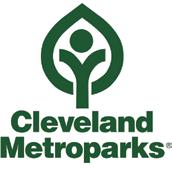
It’s time to explore Cleveland Metroparks. Discover trails to hike, bike, or run. Experience the wonder of the animal kingdom at Cleveland Metroparks Zoo. Play any of eight scenic golf courses throughout greater Cleveland. Dine on the river at Merwin’s Wharf. See the city like never before from the shores of Lake Erie. Take time to explore clevelandmetroparks.com.
Connecting for Kids
Connecting for Kids provides resources, support and community to families in Northeast Ohio who have concerns about their child. They support families who have children with mental health concerns, developmental delays and disabilities as well as those facing major life changes. They offer library programs, Resources Fairs and a Family Resource Specialist (FRS) Program. Library programs include support groups for adults, presentations by professionals as well as hands-on programs that caregivers attend with their child. The FRS program offers a CFK staff member who meets with families and assists them in navigating resources. All programs are offered free to families. 440-570-5908, connectingforkids.org
with developmental disabilities of all ages to live, learn, work and play in the community. For more info on services and resources, call 216-241-8230 or visit cuyahogabdd.org.
Eisner, Gohn Group
Eisner, Gohn Group is a leading resource for risk protection strategies with life and disability insurance. Its team has the experience and expertise in these areas to craft and deliver cost effective and efficient solutions for clients. eisnergohngroup.com

Fine Arts Association

Guided by its values of equity, integrity, growth and community, The Fine Arts Association (FAA) seeks to create and discover beauty to foster a community empowered by the arts. FAA offers arts education programming in dance, music, theatre, visual arts and creative arts therapies for all ages and ability levels. In addition to arts education, The FAA Performance Department creates opportunities for members of the community to be involved in every aspect of the theatrical experience. From family musicals to performances by professional musicians, the dynamic performance season has something for everyone. 440-951-7500, fineartsassociation.org
Friendship Circle of Cleveland
Friendship Circle sparks friendship, connection and support for children of all abilities, their families, and teen volunteers. Children, teens and young adults with developmental disabilities are provided a unique opportunity to make friends and enhance their social skills through a variety of interactive programs alongside their peers. Teen volunteers are given an opportunity to experience joy and fulfillment from helping others, while also learning how they can help make the world more inclusive and accepting. Friendship Circle offers a safe place for these friendships to form organically, while also providing fun activities, field trips, community integration, holiday celebrations, family support, sensory stimulation, and so much more. Every child deserves a friend! Contact bree@friendscleveland.com, 216-3773000 ext. 1008, or visit friendscleveland.com.
I am Boundless
centered care that celebrates each individual and encourages them to become active participants in the communities where they live, work, and play. To learn more about how Boundless can help you or your loved ones, 800-409-2729, iamboundless.org

Julie Billiart Schools
With campuses in Akron, Brecksville, Lyndhurst, and Westlake, this network of K-8 private, Catholic schools educates and empowers children with learning and social differences. Students with mild to moderate autism, ADHD, dyslexia, anxiety and other learning differences thrive with JB’s small class sizes, onsite therapies, and direct intervention. Visit the website to apply, register for an open house, or learn more about its curriculum. juliebilliartschools.org

Lake County Board of DD/Deepwood

The mission of the Lake County Board of Developmental Disabilities/ Deepwood is to empower individuals with developmental disabilities to engage in activities that enrich their lives and contribute to their community. In the ever-changing landscape of federal and state regulations, the LCBDD’s overriding vision remains constant: to offer Lake County citizens the highest-quality, most-inclusive, collaborative, and person-centered services and supports available within resources. Working closely with other agencies and community partners, the LCBDD helps individuals and their families identify and receive services needed for a safe, healthy, and fulfilling life. Visit lakebdd.org or follow @DeepwoodLakeDD on social media.
Medina County Board of Developmental Disabilities
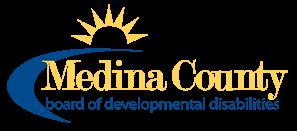
The Medina County Board of Developmental Disabilities is the community resource responsible for connecting, coordinating and funding services for individuals of all ages with developmental disabilities. It helps with everything from early intervention and education opportunities for children to employment and community inclusive living for adults so they can live, learn, work and socialize in the community. 330-725-7751, mcbdd.org
Milestones Autism Resources

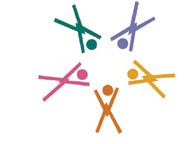
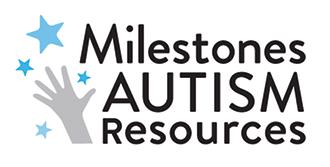
Cuyahoga County Board of Developmental Disabilities

The Cuyahoga County Board of Developmental Disabilities proudly supports and empowers people
For more than 40 years, I Am Boundless, a statewide nonprofit, has provided people with intellectual and developmental disabilities and behavioral health challenges the freedom and opportunity to live boundless lives. They serve all ages and abilities in autism services, primary care and dental appointments, job training, counseling, and residential support. They proudly provide person-
Milestones Autism Resources improves the lives of autistic individuals, families, caregivers and professionals by educating, coaching and connecting them to resources. Providing an annual autism conference, a free helpdesk, consultations and training, and a website with more than 1,400 resources, Milestones is here to support individuals at every age, stage and ability. The groundbreaking Milestones Autism Planning Tool walks you step-by-step through everyday life issues, from early childhood through adulthood. The MAP is truly your online guide
48 livespecial.com 2023-24 SPECIAL ADVERTISER LISTINGS
for life with easy to navigate, practical strategies and skill-building tips. It will help you plan and prioritize and can be customized to any age, ability and interest. Check it out at milestones. org/map. For more information, visit milestones. org or visit the Milestones free autism Helpdesk at milestones.org/helpdesk. To connect with a Spanish speaker, call 216-464-7600 ext. 5.
New Heights ABA
An established Northeast Ohio behavior therapy clinic serving children diagnosed with autism in Cuyahoga and surrounding counties. They provide full and half day programming in a center-based setting, utilizing principles of applied behavior analysis to target skill acquisition and behavior reduction in both 1:1 and small group settings. Warrensville Heights, 216-545-4040; Middleburg Heights, 216-321-0720. Visit newheightsaba.org

Saw Inc.
Started in 1969, the non-profit organization serves the needs of adults with developmental disabilities by offering vocational habilitation services, group employment and adult day centers with four campuses in Northeast Ohio. Learn more at sawinc.org or call 216-861-0250
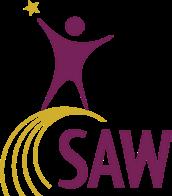

Solon Community Living Solon Community Living (SCL) is a non-profit agency dedicated to providing a quality, community-accessible, sustainable housing option for adults with developmental disabilities and educational opportunities that build vital life skills and prepare homes for each resident with walkable access to the community so they can safely live, work, socialize and thrive with the support they need. Solon Community Living, 6790 Ridgecliff Drive, 440-519-1517, soloncommunityliving.org
Stark County Board of Developmental Disabilities (Stark DD)

Step Forward
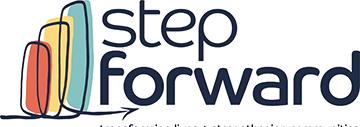
As the state’s designated anti-poverty agency for Cuyahoga County, Step Forward is tasked and trusted to lead the fight on the ground against poverty in the community. Step Forward helps low-income individuals and families address immediate needs and build long-term skills to transform their lives through early childhood education such as Early Head Start and Head Start, personal development like counseling and workshops, professional development including adult skills training and employment connection, and other services such as emergency assistance and the Home Energy Assistance Program. For more info, 216-589-9922, stepforwardtoday.org.
Summit Academy Schools

Summit Academy Schools represent a nonprofit 501 (C)(3) network of 23 tuition-free, community schools throughout Ohio. Summit Academy Schools educate students in grades K-12 with special education needs such as autism and ADHD. Summit Academy designs, develops and delivers educational opportunities in a therapeutic environment so everyone can learn. Their schools offer low student-to-teacher ratios, social skills training for students, compassionate staff and a safe and nurturing environment where students feel welcome and can achieve academic success. For more information visit summitacademies.org or call 1-844-549-8496.
Summit County Developmental Disabilities Board (Summit DD)
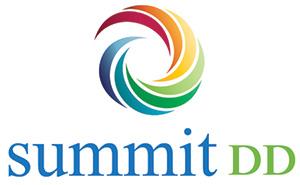

The Down Syndrome Association of Northeast Ohio

It provides support, education and advocacy for individuals with Down syndrome, their families and communities. DSANEO is the primary resource for families and communities regarding Down syndrome, where all people with Down syndrome are accepted, included and empowered. DSANEO supports individuals with Down syndrome through their lifetime with family support programs, education enrichment for toddlers to teens, life skills classes, social programs, medical outreach and advocacy. DSANEO supports more than 1,000 individuals with Down syndrome and their families throughout 16 NortheastOhio counties. 216-447-8763, dsaneo.org
Thrive Through Tennis

At Thrive, their mission is to utilize tennis as a therapeutic model. Their goal is for all participants to benefit physically, mentally, and socially from the sport of tennis. For adults and youths with different abilities, they offer both adaptive and wheelchair tennis programs. Homeschooled students learn and develop tennis skills through the Homeschool Tennis Academy. Their Parkinson’s program has an exercise session specifically designed to help rigidity, bradykinesia, coordination, and balance, followed by tennis instruction and play. The programs run at Center Court Tennis Club, 1 Eagle Valley Court, Broadview Heights, OH 44147. Please call 440-878-5600 or visit thrivetennis.org.
Stark DD helps more than 4,100 Stark county children and adults with intellectual/developmental disabilities by “supporting choices and creating opportunities.” The services provided by Stark DD help children learn to reach their full potential, help parents become more confident and support their child’s development and help adults to live comfortable, independent lives. Stark DD’s services not only provide the assistance needed to improve a life when needed, they help provide support to last a lifetime. Stark DD provides help for good. For resources at all life stages, explore our Navigation Tool at starkddnav.org. 330-477-5200, starkdd.org
Summit DD is the resource that makes meaningful connections for more than 5,000 children, teens and adults with developmental disabilities in Summit County. Those connections become part of a person’s journey. With each connection, a person’s network grows, helping them on a path to becoming their own strongest advocate. Summit DD believes that people have the right to direct their own journey. Its service coordinators are here to assist each person in creating a self-directed plan to meet their goals and build a team around them to help set them up for success.
330-634-8000, summitdd.org
1,500 PLUS PROVIDERS AND
IN NORTHEAST OHIO.
UCP of Greater Cleveland
UCP of Greater Cleveland is a nonprofit services agency whose mission is to empower children and adults with disabilities to advance their independence, productivity and inclusion in the community. Their mission guides the development, delivery and enhancement of programs and services. While the mission centers on the individual, programs take into consideration the larger picture that involves family and community support, public awareness, individual advocacy and overall personal growth of those we serve. UCP of Greater Cleveland, Iris S. & Bert L. Wolstein Center 10011 Euclid Avenue. Cleveland,216-791-8363, ucpcleveland.org
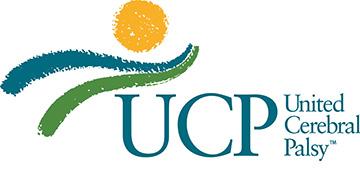
A PROJECT OF
RESOURCES
livespecial.com 2023-24 49
“Embracing the Unexpected”
A single dad’s journey raising three children with autism.
 by Rob Gorski
by Rob Gorski
Life does not always go as planned, and mine is no different. Raising three kids with autism — Gavin, who is now 23, Elliott, 17, and Emmett, 15 – as a single dad, was never part of the plan and yet here we are. To say that my life has been a rollercoaster of unpredictability, and a challenge that has had me teetering on the edge of burnout more times than I can count, would be the understatement of the century. But here is the thing — if given the chance, I would do it all again. I would do it all again in a heartbeat.
Their unique way of engaging with the world has shown me how to see things in a whole new light, while genuinely appreciating the nuance of every experience. They have taught me to slow down and see the beauty in the little things that so many others never even notice. From laughter over the same YouTube video, they have watched a million times, to celebrating every victory, no matter how big or small, each of these moments have filled my life with memories that I deeply treasure.
One of the most important lessons I have learned along the way is that my children have limitless potential. Their
capacity to love, show compassion, create, and challenge my preconceived notions is nothing short of aweinspiring. Their determination to overcome life’s challenges, and their resilience in the face of adversity, have redefined my understanding of success.
Going through this journey sometimes feels like being adrift at sea. There are times when the waves of stress, emotion, and unimaginable levels of exhaustion have nearly pulled me under. But resilience is born from adversity, and survival is fueled by self-care. Remembering to focus on my own mental and physical well-being, allowing myself grace for my many mistakes, recognizing my very human limitations, asking for help when needed, and finding pockets of ‘me-time’ have been crucial in not only helping me stay afloat but also learn to swim.
Life does get better, but better is subjective. It is not necessarily a life free of challenges but rather a life where we learn to adapt, find creative solutions, appreciate, and find joy in every victory along the way. Better may be different for everyone but if we remain openminded as to what better can be, it is easier to find.
To every parent out there navigating the often-turbulent waters of raising children with additional needs, remember you are not alone. Let your children teach you, guide you, and inspire you, just as you do for them. Embrace the lessons, cherish the moments, and know that your strength, love, and resilience shape their world. Your better is coming, even if it looks different than what you might have imagined. So, be kind to yourself. Keep pushing forward, seeking support when needed, and always hold onto hope. Remember that you are human and allow yourself grace. None of us are perfect parents, least of all me. We are, however, the perfect person to parent our kids.
Rob Gorski, based in Northeast Ohio, is the renowned blogger and podcast host behind “The Autism Dad.” As a father of three autistic children, he has been a go-to resource for parents across the globe raising autistic kids since 2010. Recognized by major outlets like CNN, ABC News, and BBC Worldwide, and honored with numerous awards, Rob’s voice resonates deeply within the global autism community, theautismdad.com.
50 livespecial.com 2023-24
PHOTO COURTESY
OF ROB GORSKI
Rob Gorski and his three children spending time exploring nature.





Inclusive performance Volunteer opportunities We Are Committed to Being Northeast Ohio’s Go-To Online Resource to Support Individuals With Special Needs and Their Families. Email info@LiveSpecial.com to receive firsthand information and updates or to receive additional magazines. Scan or visit livespecial.com Tammy and Eden at work at NCJW Cleveland Free educational opportunities Livespecial Helps Us To Live Our Best Life LiveSpecial.com is a project of NCJW/CLE
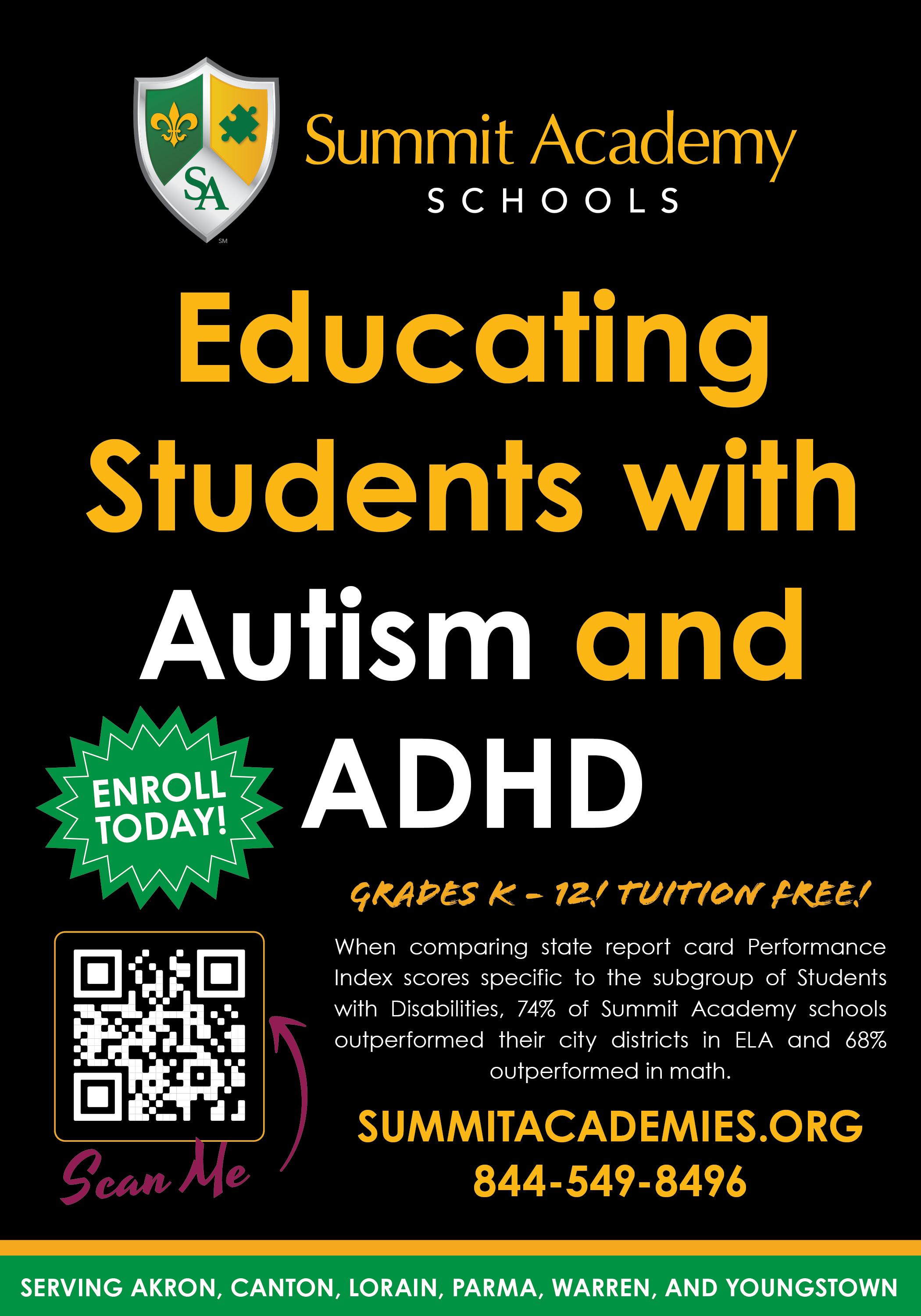

























 By David Petrovic, author
By David Petrovic, author














 By Ann Marie Raddell, Director of Creative Arts Therapies at The Fine Arts Association
By Ann Marie Raddell, Director of Creative Arts Therapies at The Fine Arts Association































































 By Jeannie Fleming-Gifford
By Jeannie Fleming-Gifford

























 By Erin Sernoffsky
By Erin Sernoffsky

 By Jeannie Fleming-Gifford
By Jeannie Fleming-Gifford

























 by Rob Gorski
by Rob Gorski




